Curating & Exhibitions
Curating & Exhibitions
My early curatorial experience in the 1990s was with a Joseph Beuys exhibition at the Art Gallery of Ontario, and as a freelance Curator with Oakville Galleries in Canada. I was also a Senior Research Fellow at the National Gallery of Canada. Recent curated exhibitions include Ifipe fya Bana co-curated with Stary Mwaba in Kitwe on the Zambian Copperbelt (2022); Eria SANE Nsubuga: The Baganda (2022); and Thania Petersen: Between land and a raised foot (2019). Following a two month artist’s residency, Petersen created the outdoor installation, Ziyarat, specifically for this show.
While in Makhanda, I also curated the first solo show for the Ghanaian artist, Bright Tetteh Ackwerh, titled Where de choy dey? (2018); as well as Converge (2018); SLIP: Mbali Khoza and Igshaan Adams (2014); the performance programme Blind Spot at the National Arts Festival (2014) that included Igshaan Adam’s Bismillah performance; and the exhibition Making Way: Contemporary Art from South Africa and China (2012). Making Way travelled to Johannesburg in 2013, and was opened by Darryl Accone, the author of All Under Heaven: The Story of a Chinese Family in South Africa. In 2016 I was invited to co-curate the Special Project Tomorrows/Today at the Cape Town Art Fair with Azu Nwagbogu. In 2016, I was invited to co-curate the Special Project Tomorrows/Today at the Cape Town Art Fair with Azu Nwagbogu.
I founded the Arts Lounge (also known as Arts Lounge Africa) in 2011, which is a series of art conversations, performances and interventions that mostly take place during the National Arts Festival in South Africa. Our inaugural guest artist was Maurice Mbikayi, who created the street performance, Intersections (see Film & Photography).
In 2018, I founded the RAW Spot Gallery as part of my SARChI Chair programme, and have facilitated a number of exhibitions and residencies as part of my Residencies for Artists and Writers (RAW) programme. Artists that we have hosted at the RAW Spot Gallery for solo exhibitions include Peju Layiwola, Moffat Takadiwa, Kresiah Mukwazhi, Bright Tetteh Ackwerh, Thania Petersen, Senzo Shabangu, Usen Obot, Quadri Oluwasegun, Edith Bukani, Viwe Madinda, Brunn Kramer, and Matlali Matabane.
Eria SANE Nsubuga: The Baganda (2022) was curated by Ruth Simbao at the RAW Spot Gallery, Makhanda, South Africa. See forthcoming book chapter, “Queen Elizabeth II’s ‘Commonstealthiness’: Radical Rudeness and Trickster Moves in Eria ‘SANE’ Nsubuga’s Exhibition, The Baganda” in the book, Image of the European in African Art edited by Henry L. Gates, Suzanne Blier and David Bindman (Harvard University Press). All images by Ruth Simbao. Please do not use images without written permission.

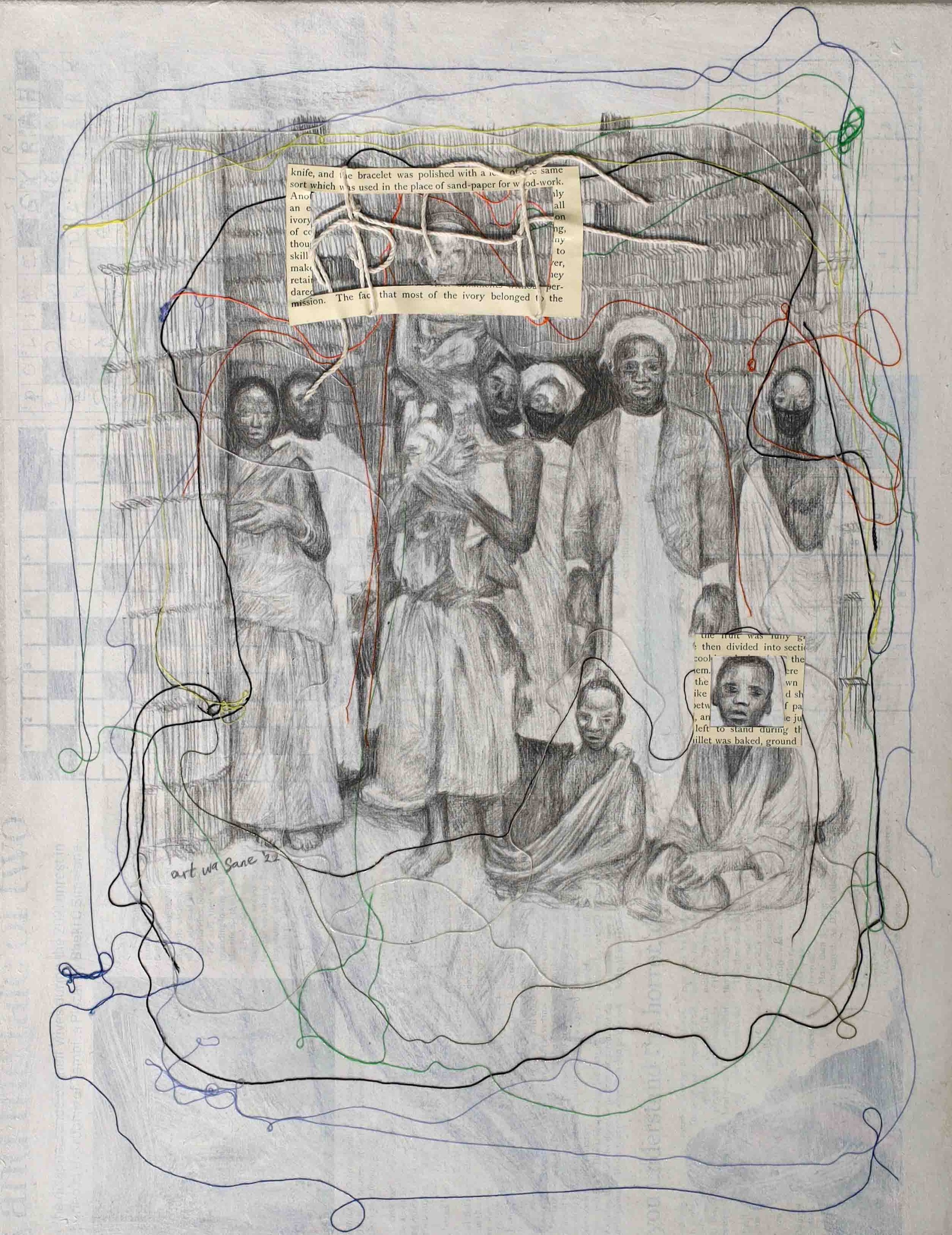
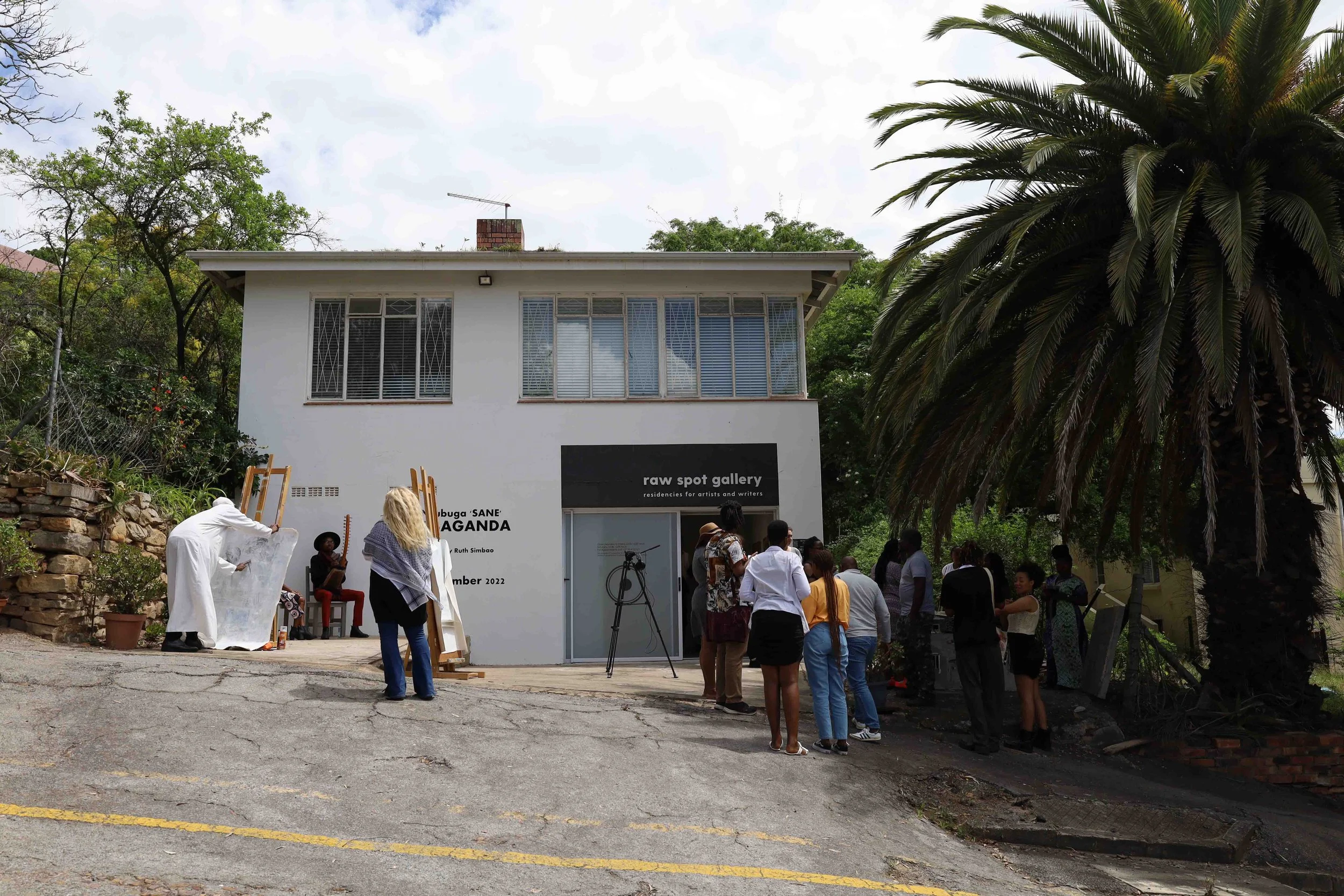



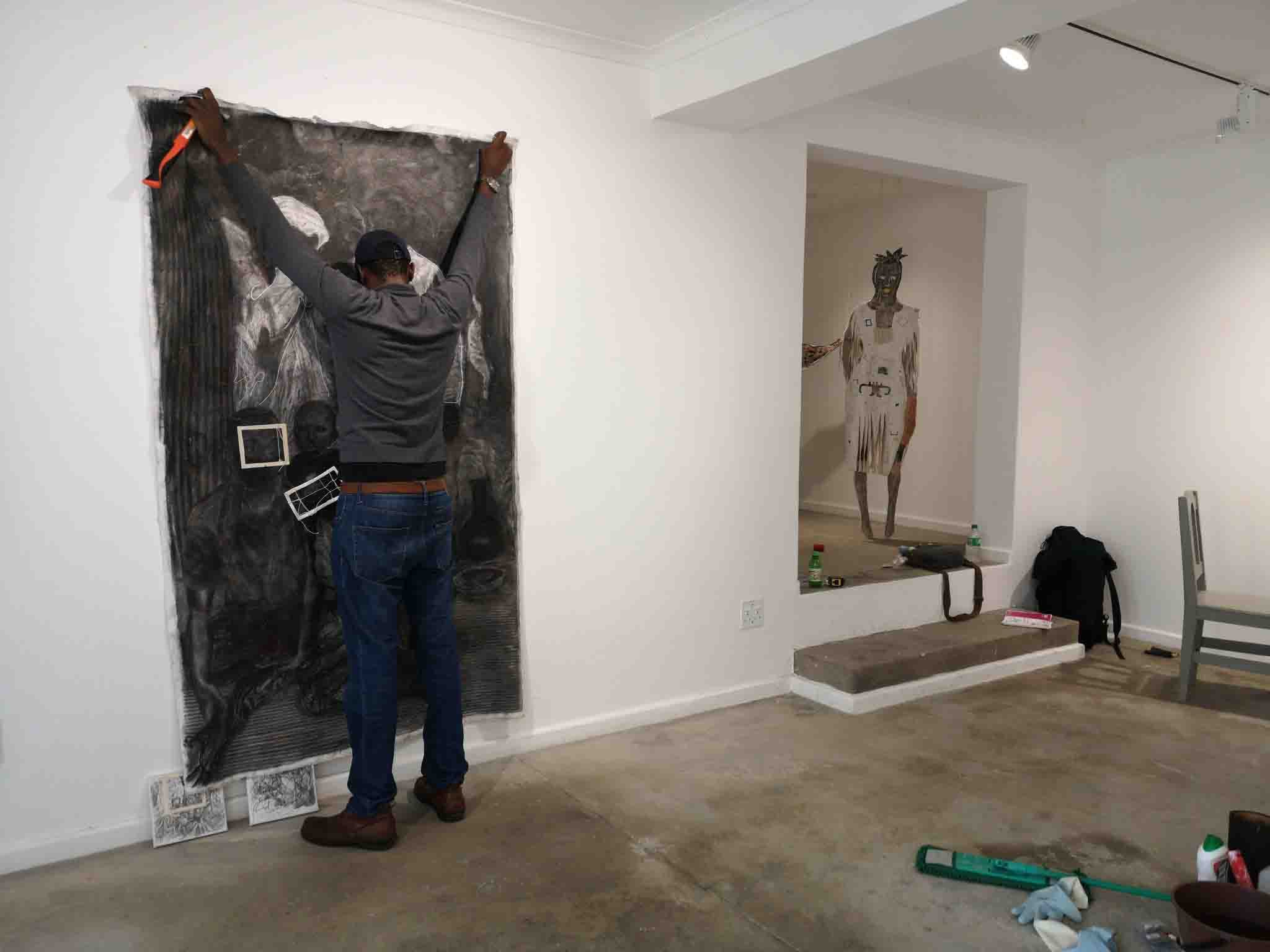
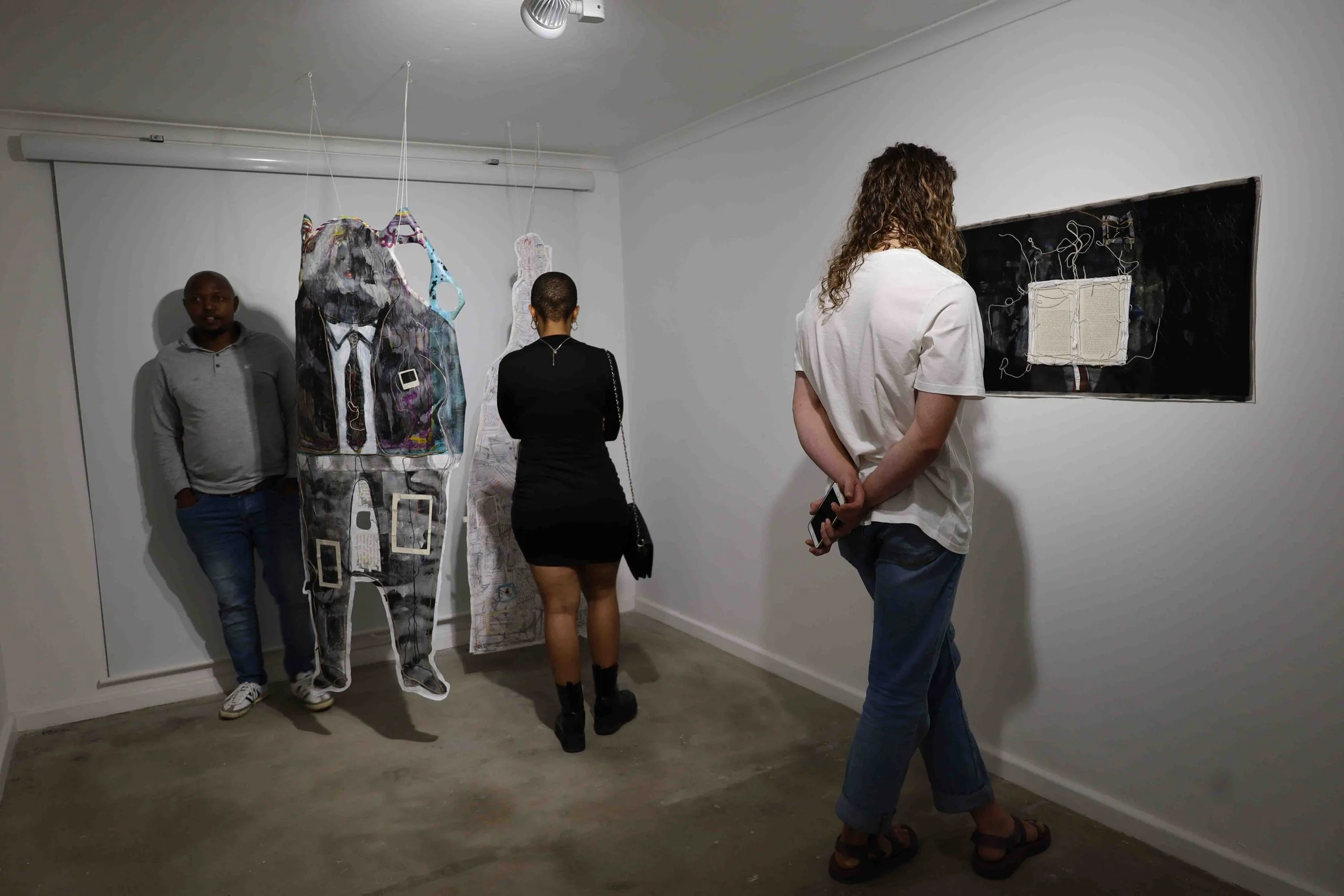
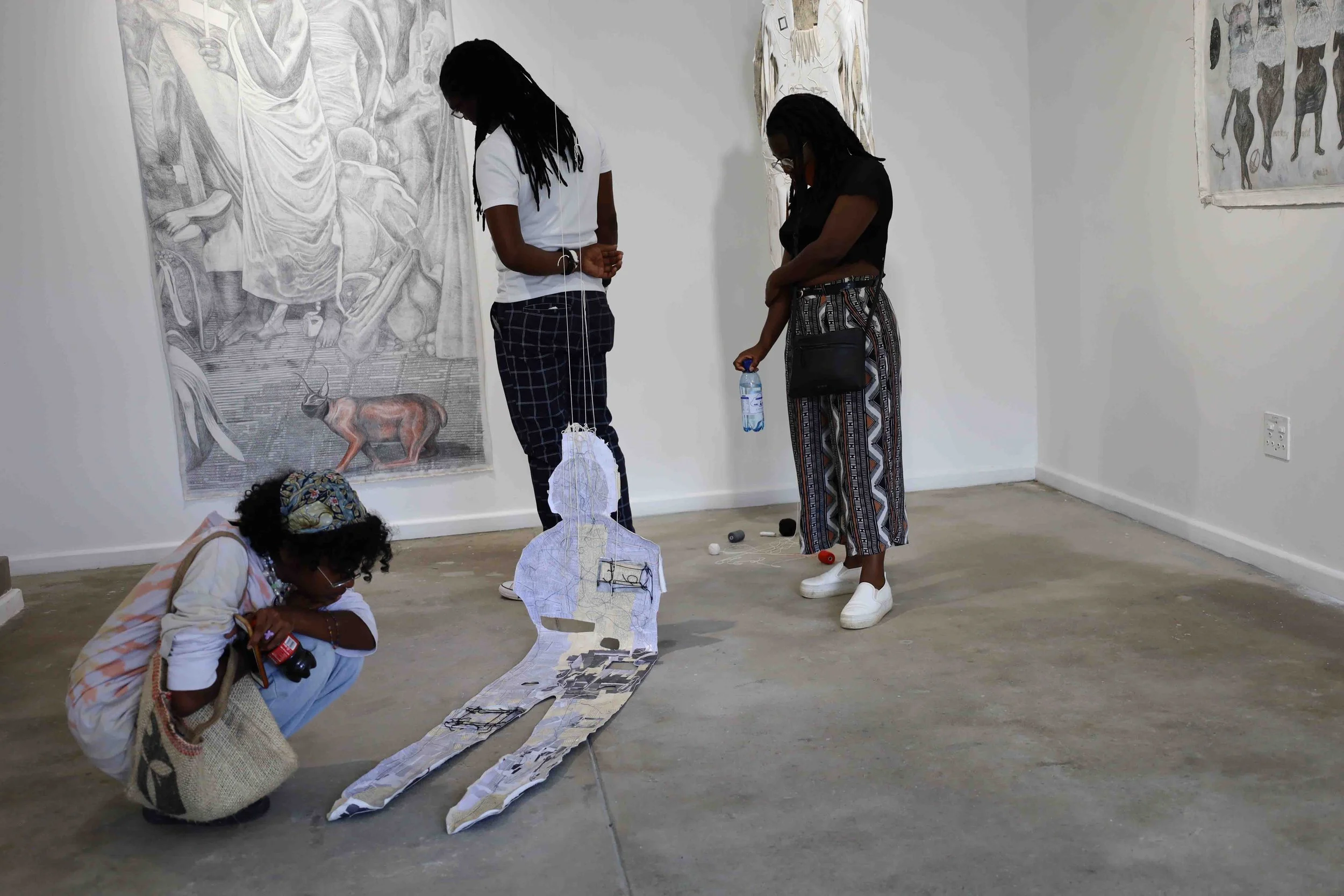


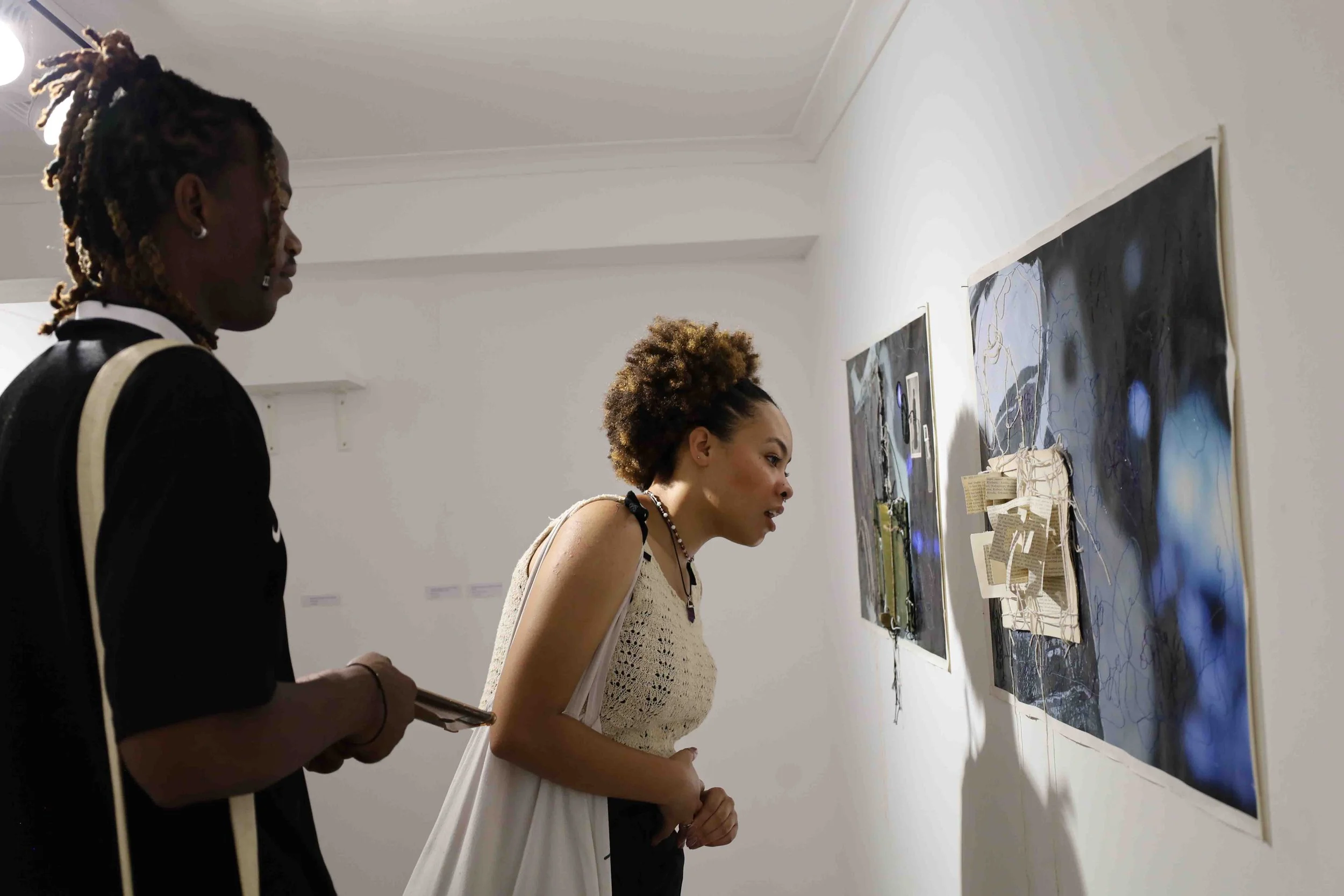
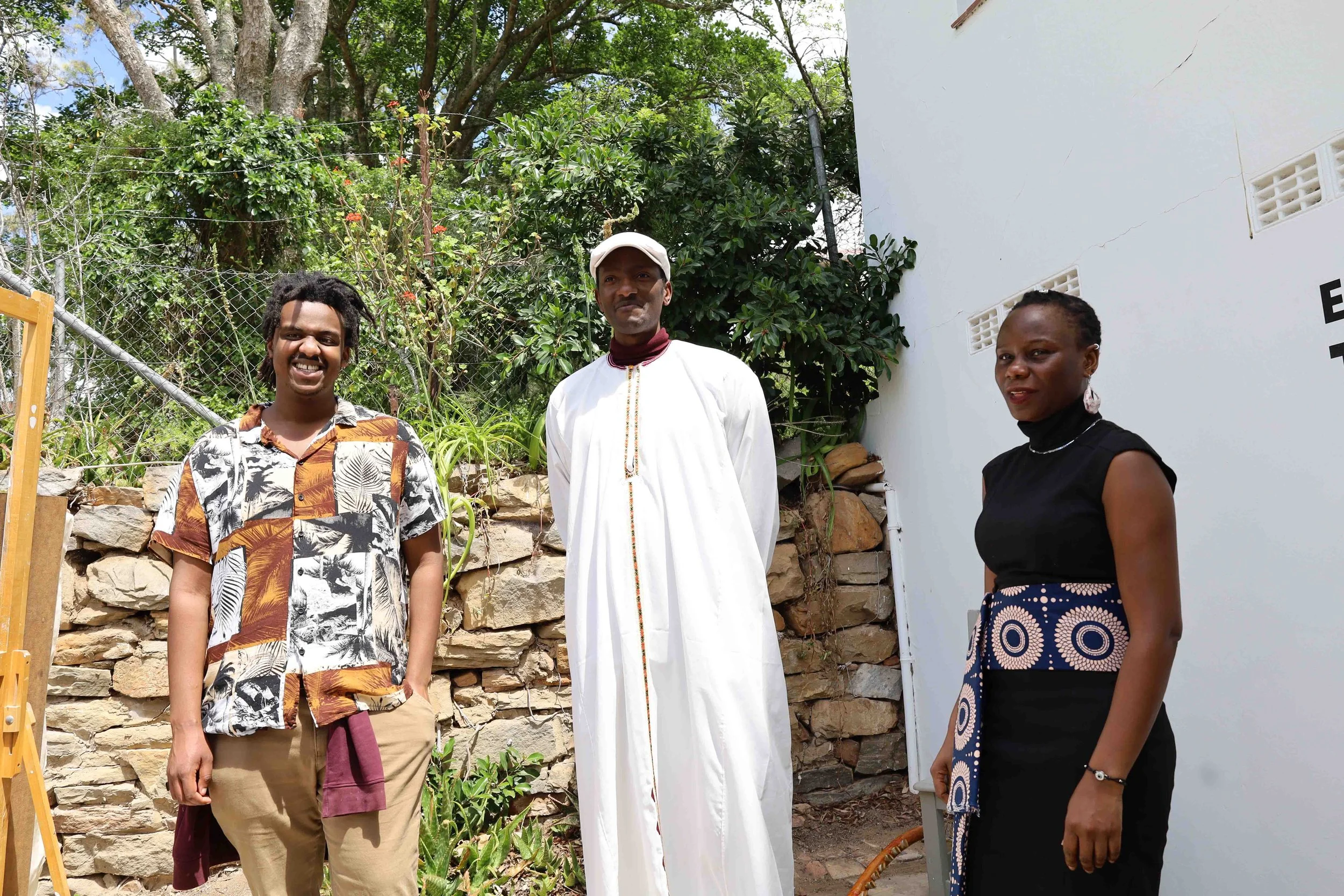

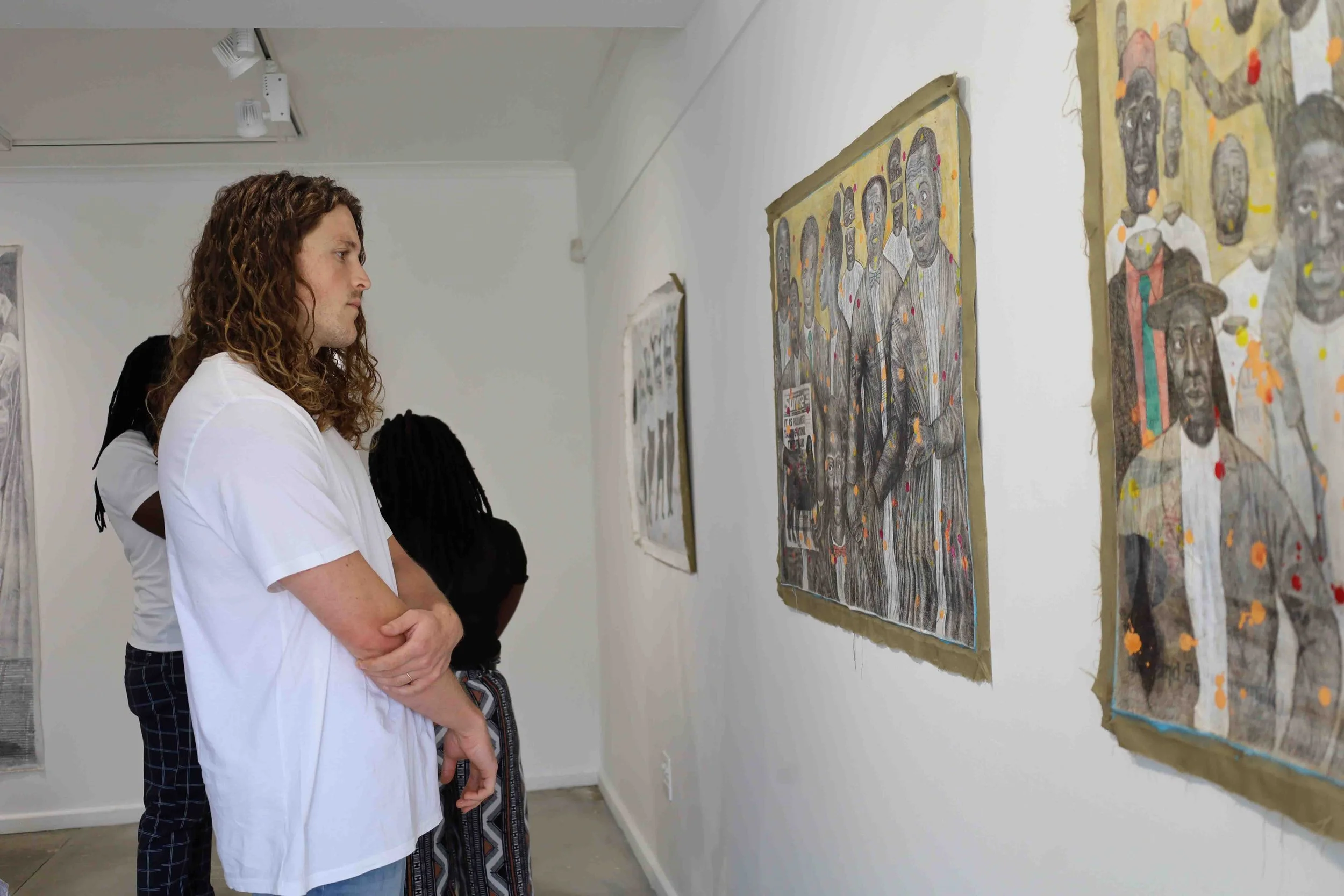
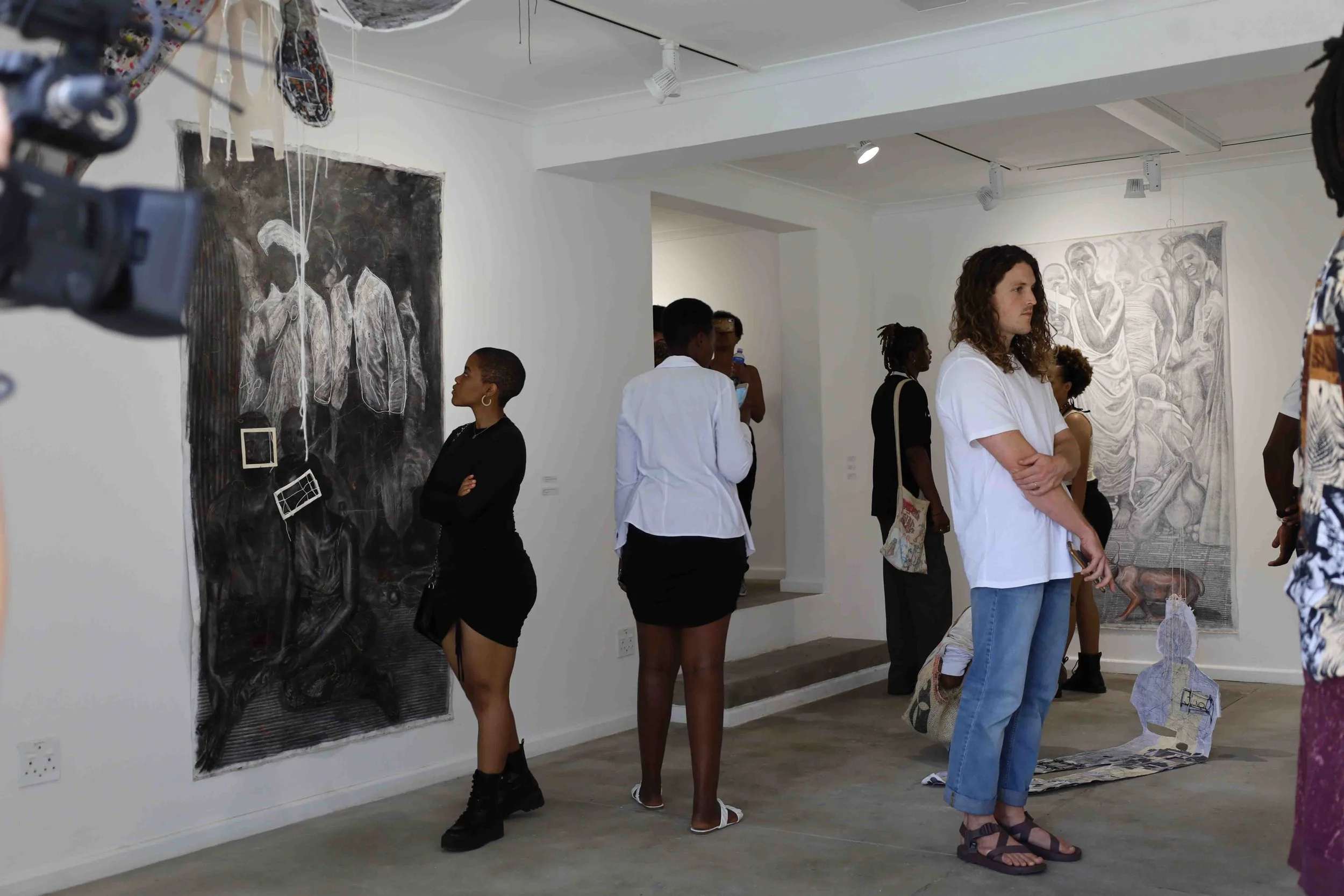

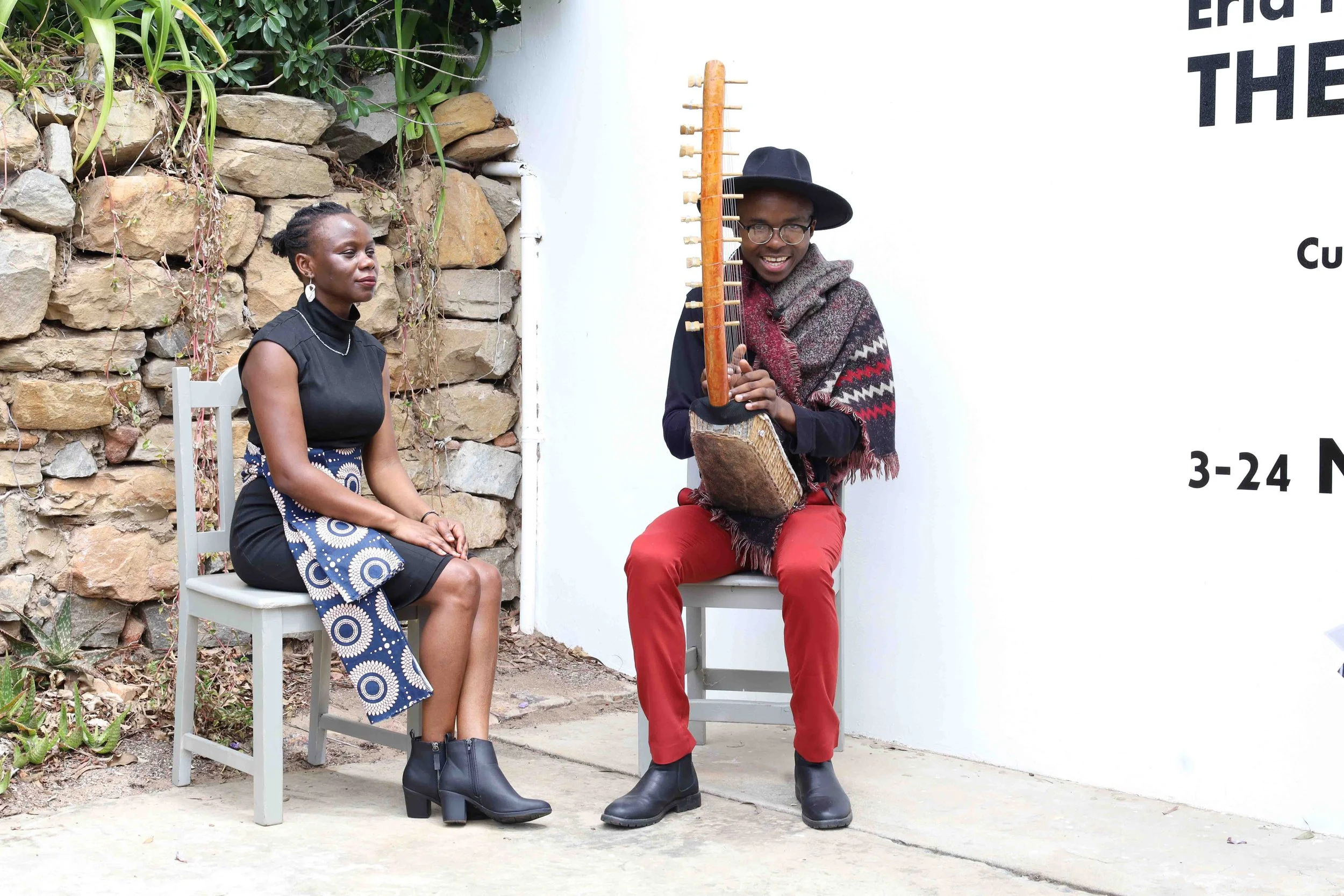
Thania Petersen: Between land and a raised foot was curated by Ruth Simbao for the main programme of the National Arts Festival in 2019. Three venues were used: the RAW Spot Gallery, the basement of the Monument and the mountainside between these two places. The outdoor installation, Ziyarat, was created for this exhibition. My article, “Between land and a raised foot: Thania Petersen stands her ground” will be published in Art Journal in Spring 2025.






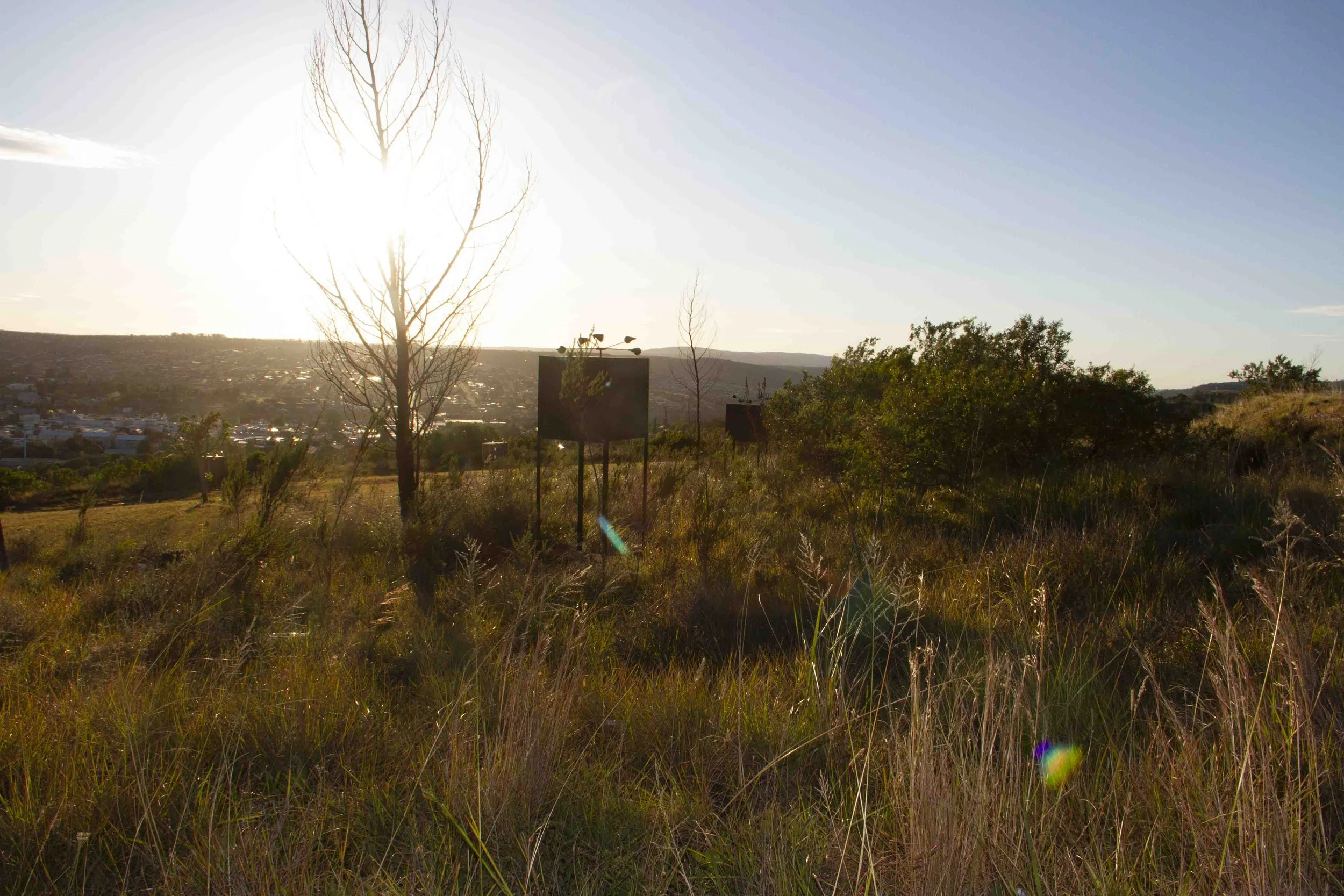

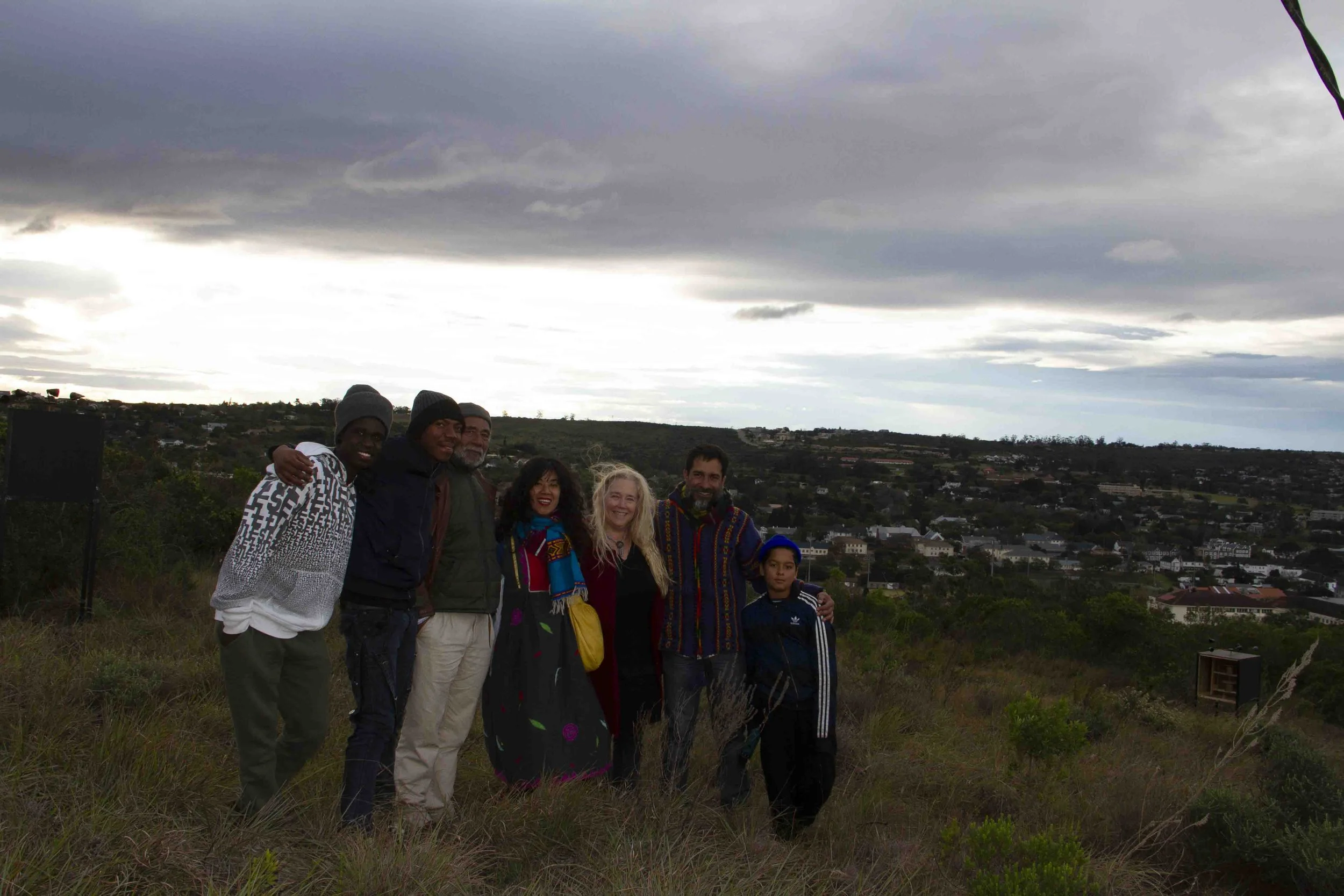

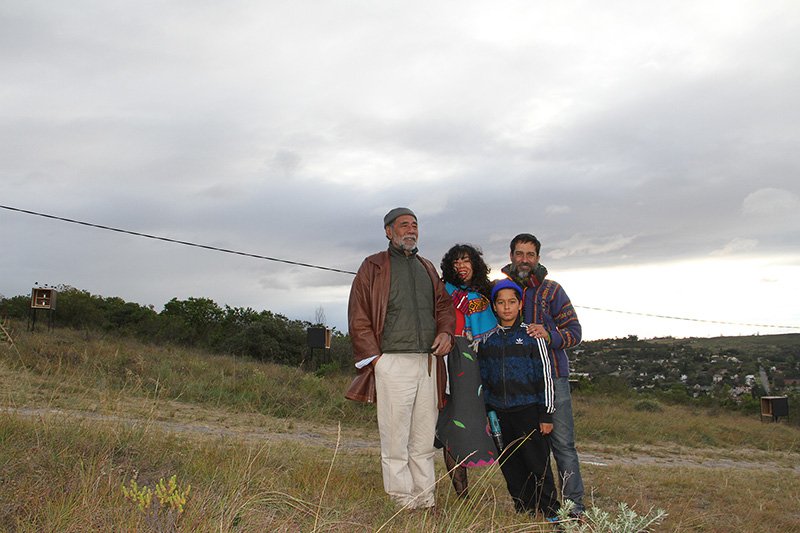
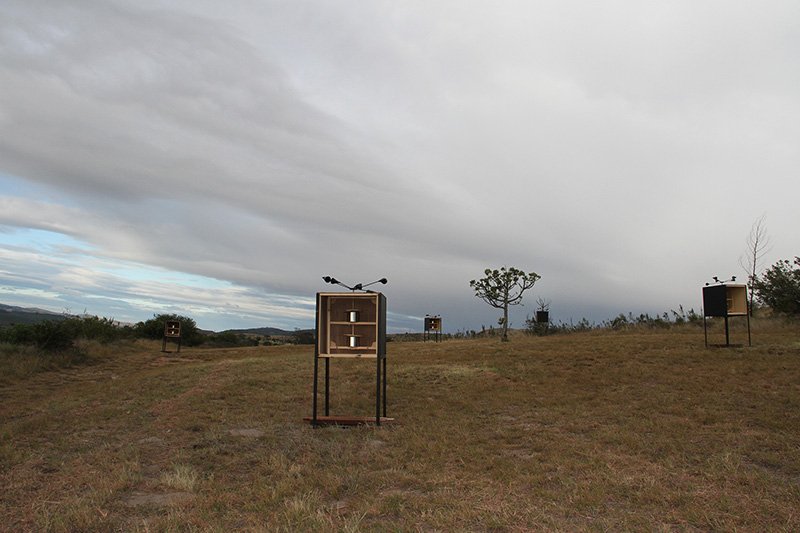




Bright Tetteh Ackwerh’s first solo exhibition, Where de choy dey? (2018) was curated by Ruth Simbao at the RAW Spot Gallery in collaboration with the Mellon-funded programme, Thinking Beyond the Abyss for a Transformative Curriculum, organised by Lynette Steenveld. My article on this exhibition, “Landing in the Soup: Gastropolitical Consumption and Resource Extraction in Bright Tetteh Ackwerh’s Exhibition, Where de choy dey?” is forthcoming in Audacious Art Histories: Grounding the Arts of Africa. All photographs by Ruth Simbao. Please do not use images without written permission.












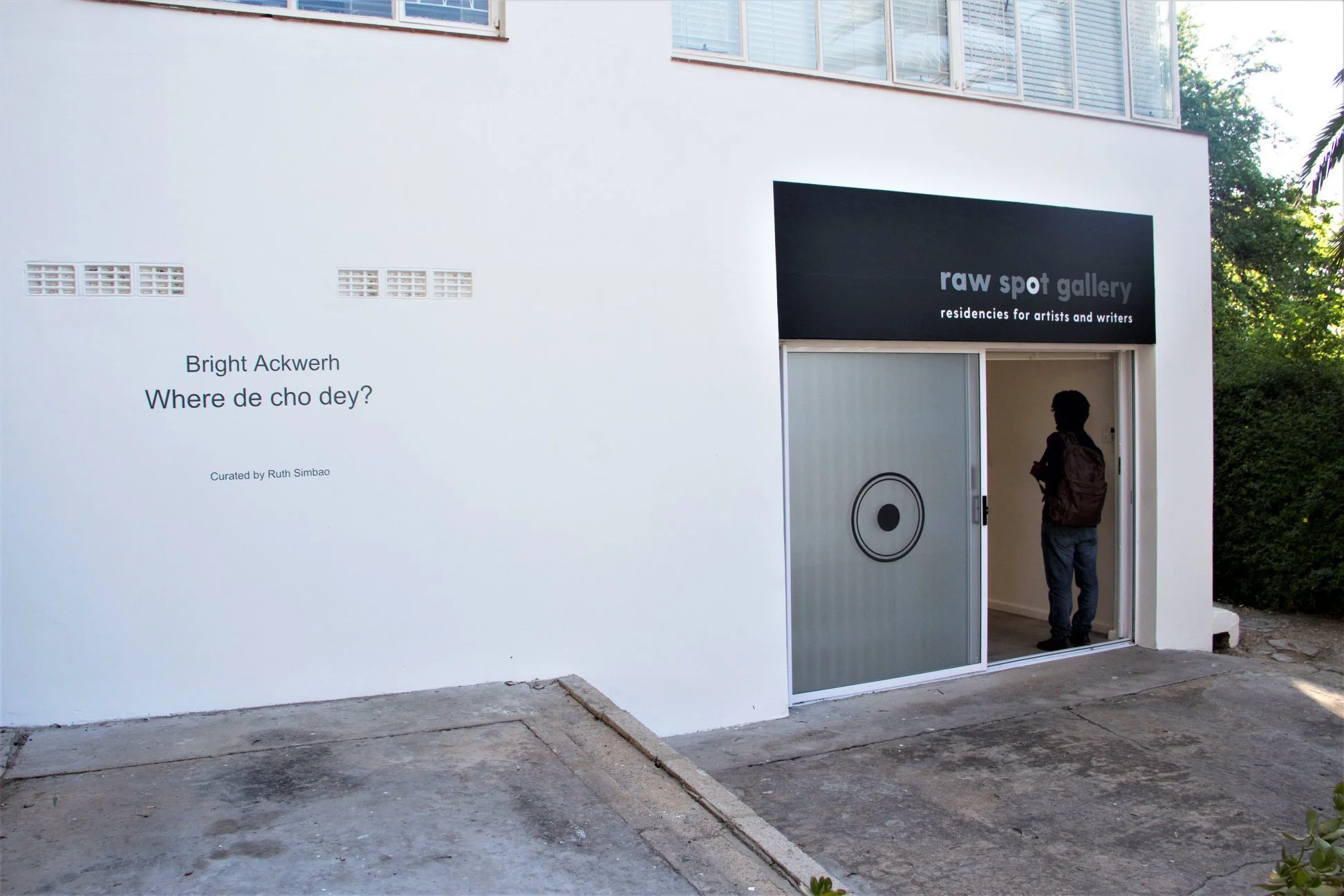
















Converge was a group exhibition curated by Ruth Simbao and Brunn Kramer, which brought together the work of the team members of my SARChI programme, Geopolitics and the Arts of Africa in 2018. Participating students included Brunn Kramer, Aaron Samuel Mulenga, Akissi Beukman, Gladys Kalichini, Natasha Bezuidenhout, Samkela Stamper, Stary Mwaba, Viwe Madinda and Wallen Mapondera. Converge also included the work of guest artists Bernard Akoi-Jackson (Ghana), Sonwabiso Ngcai (South Africa) and Jelili Atiku (Nigeri), and previous participants in my programme Rehema Chachage, Masimba Hwati, Moffat Takadiwa, Gillian Stacey Abe and Rachel Baasch. Converge was installed at the RAW Spot Gallery and various outdoor spaces. See forthcoming publication “Converge: A Geometry of Collaboration” by Ruth Simbao, Rachel Baasch and Stephen Fọlárànmí in Audacious Art Histories. All photographs by Ruth Simbao. Please do not use images without written permission.





























The performance art programme Blind Spot was curated by Ruth Simbao for the main programme of the National Arts Festival (2014). It included four performances: Bismillah by Igshaan Adams, What difference does it make who is speaking? by Mbali Khoza, Barongwa by Mohau Modiksakeng and Sikhumbuzo Makandula, and Everse by Simone Heymans, Chiro Nott, Ivy Kulundu-Gotz and Joseph Coetzee. All photographs by Ruth Simbao. Please do not use images without written permission. Four Blind Spot live art videos.
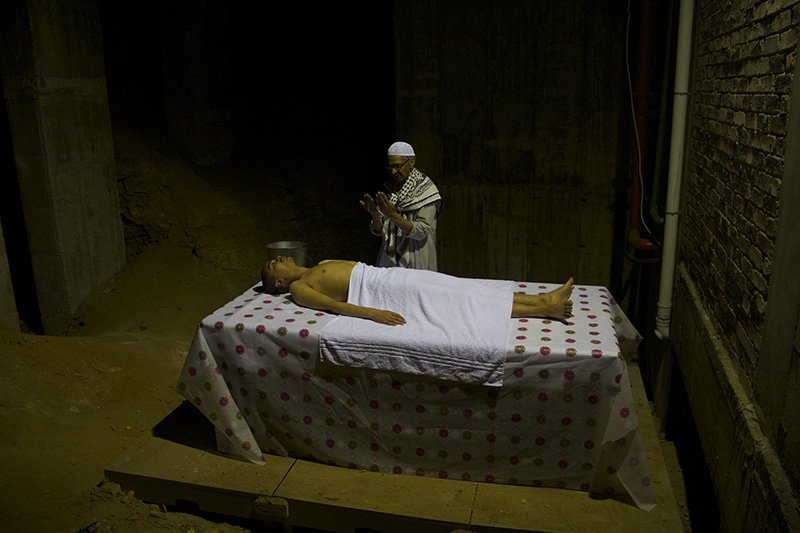

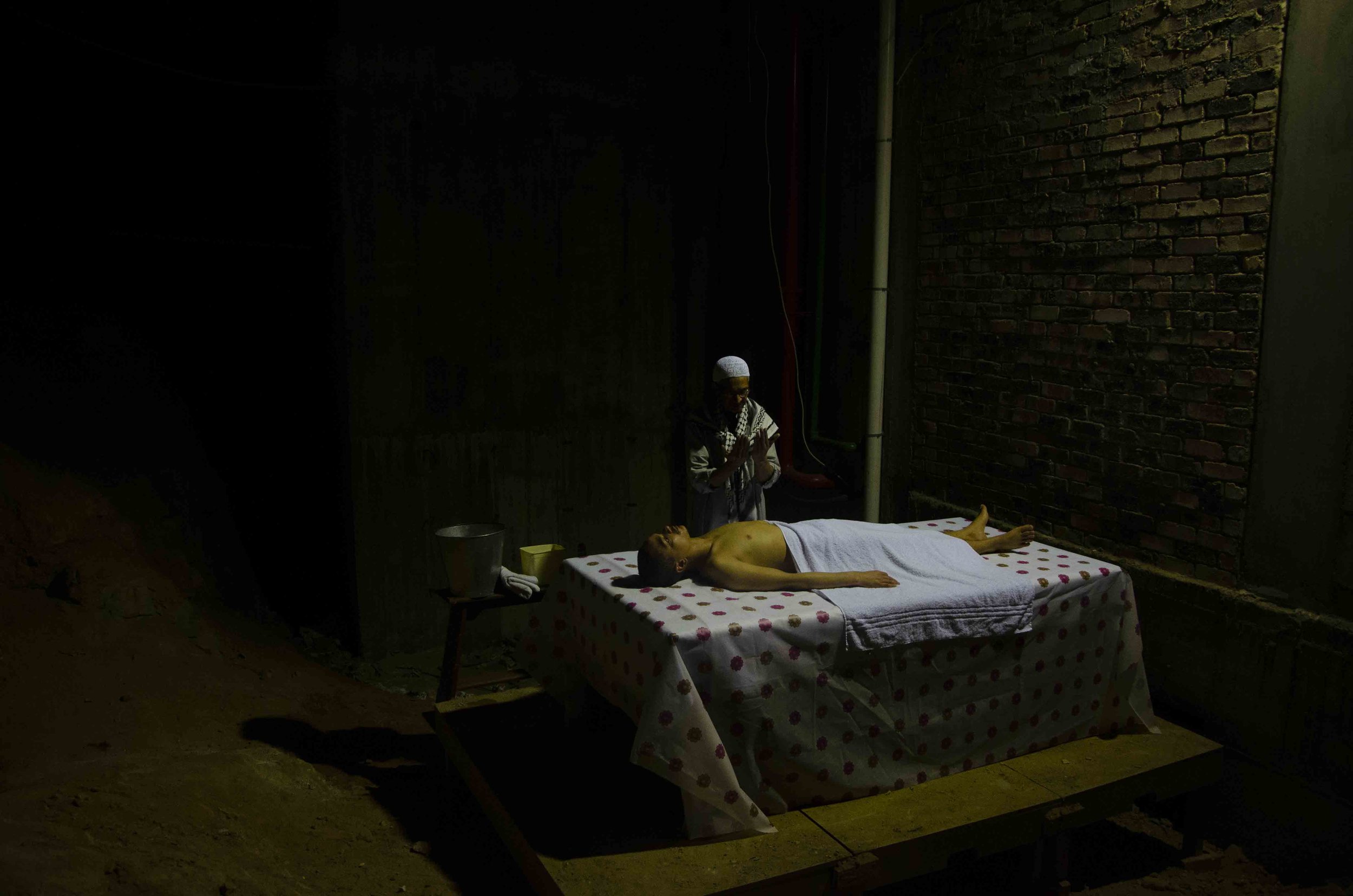

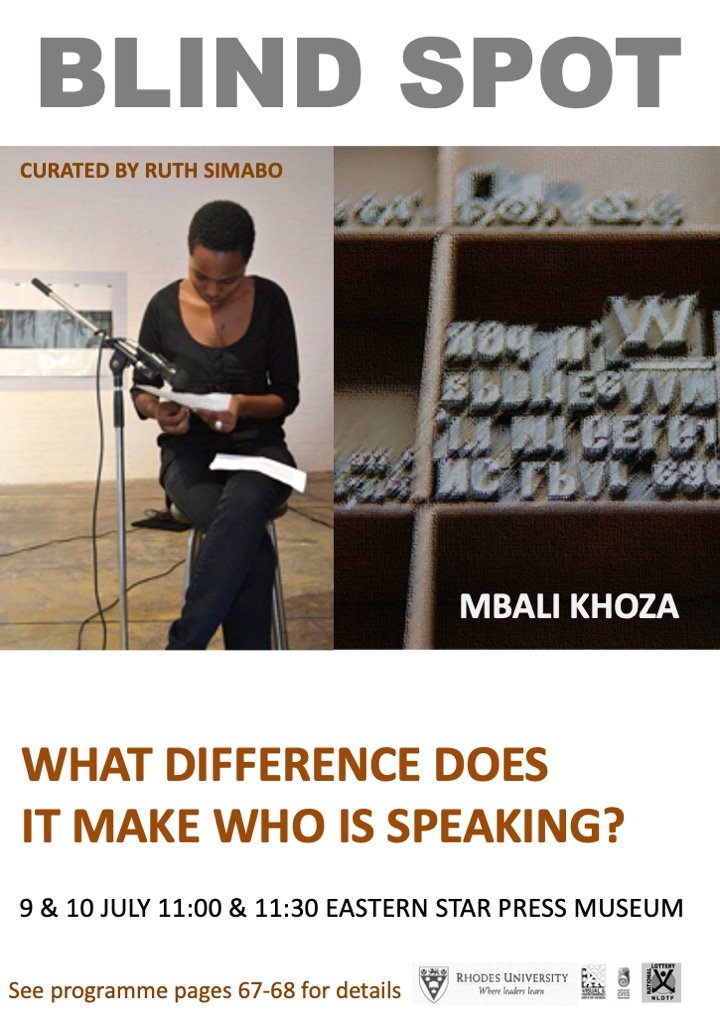



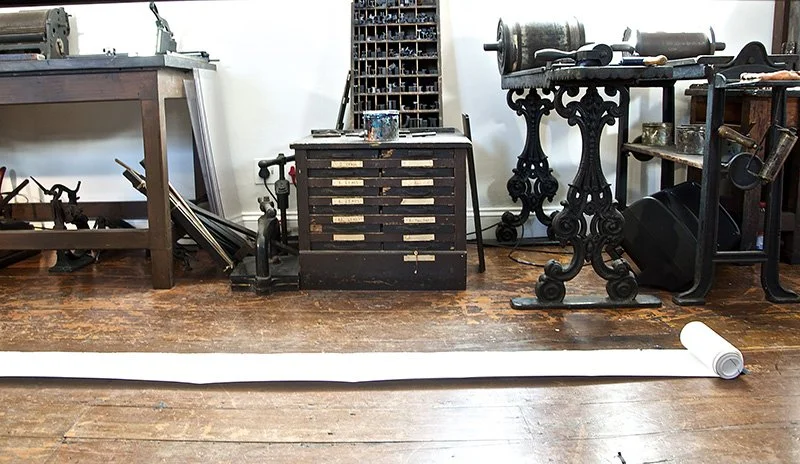
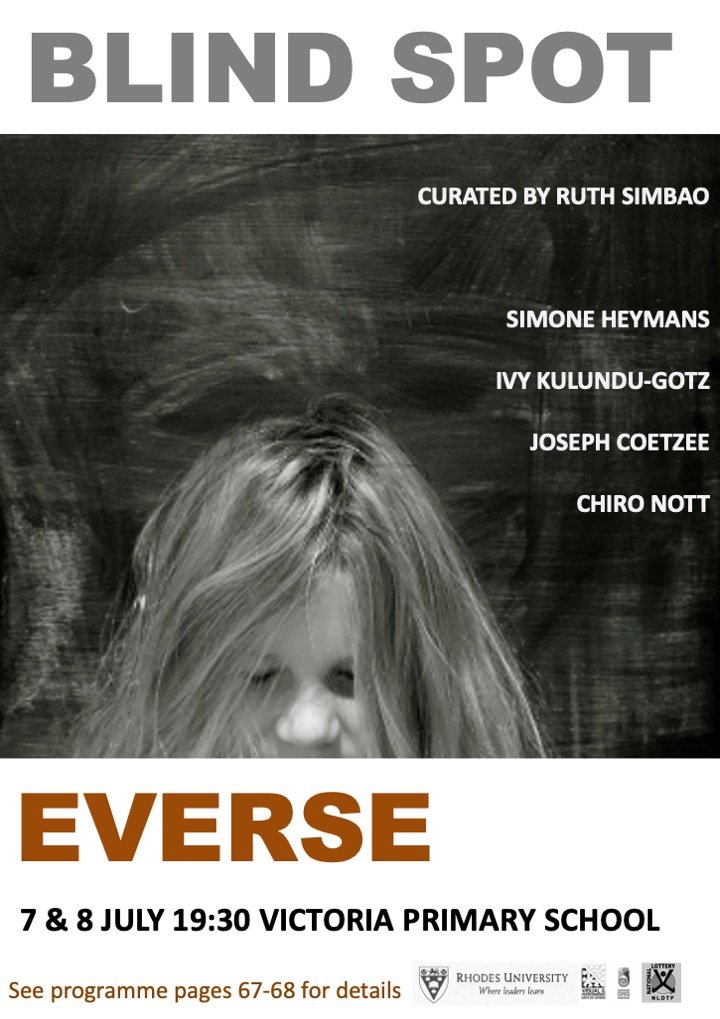

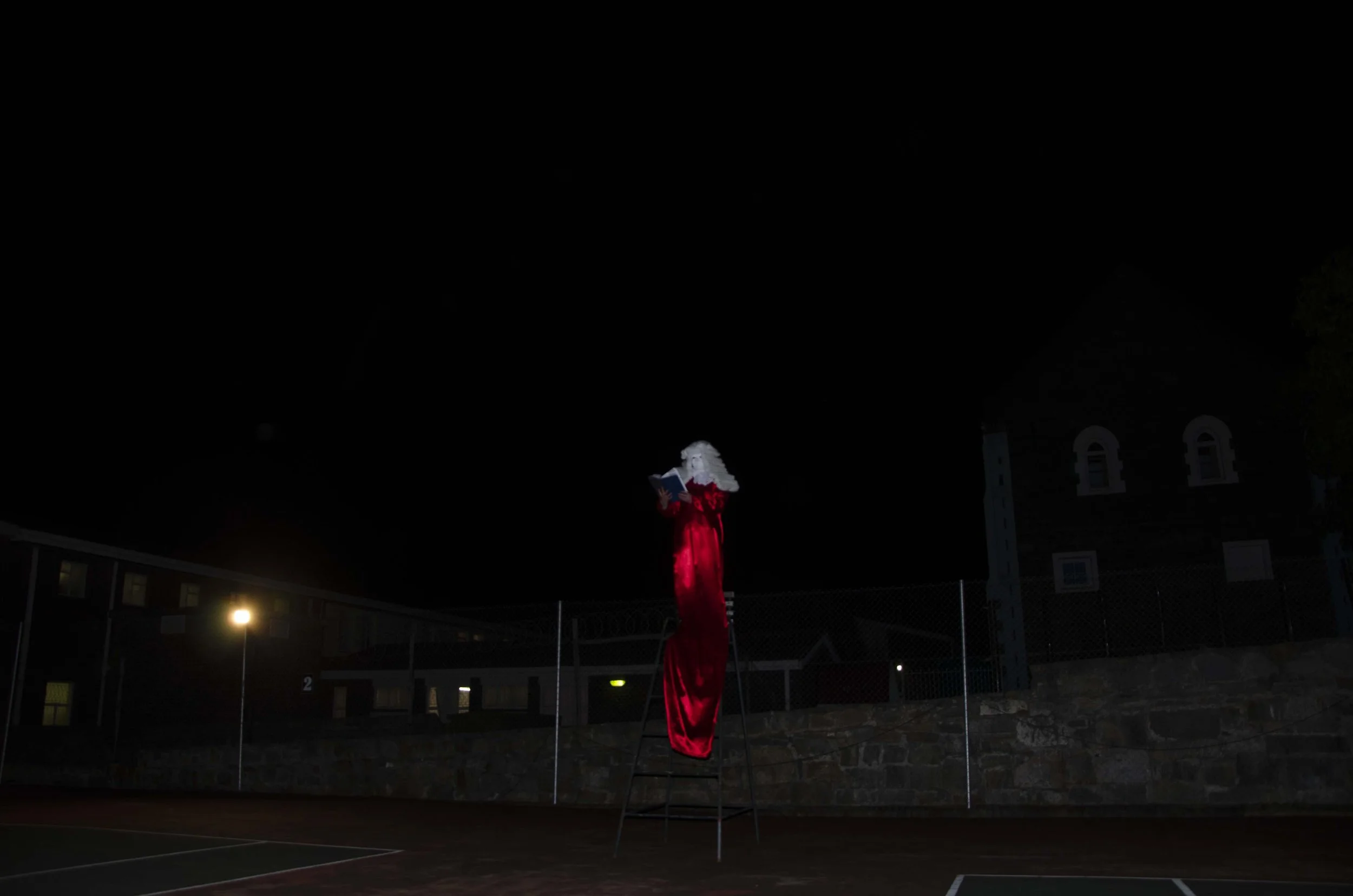
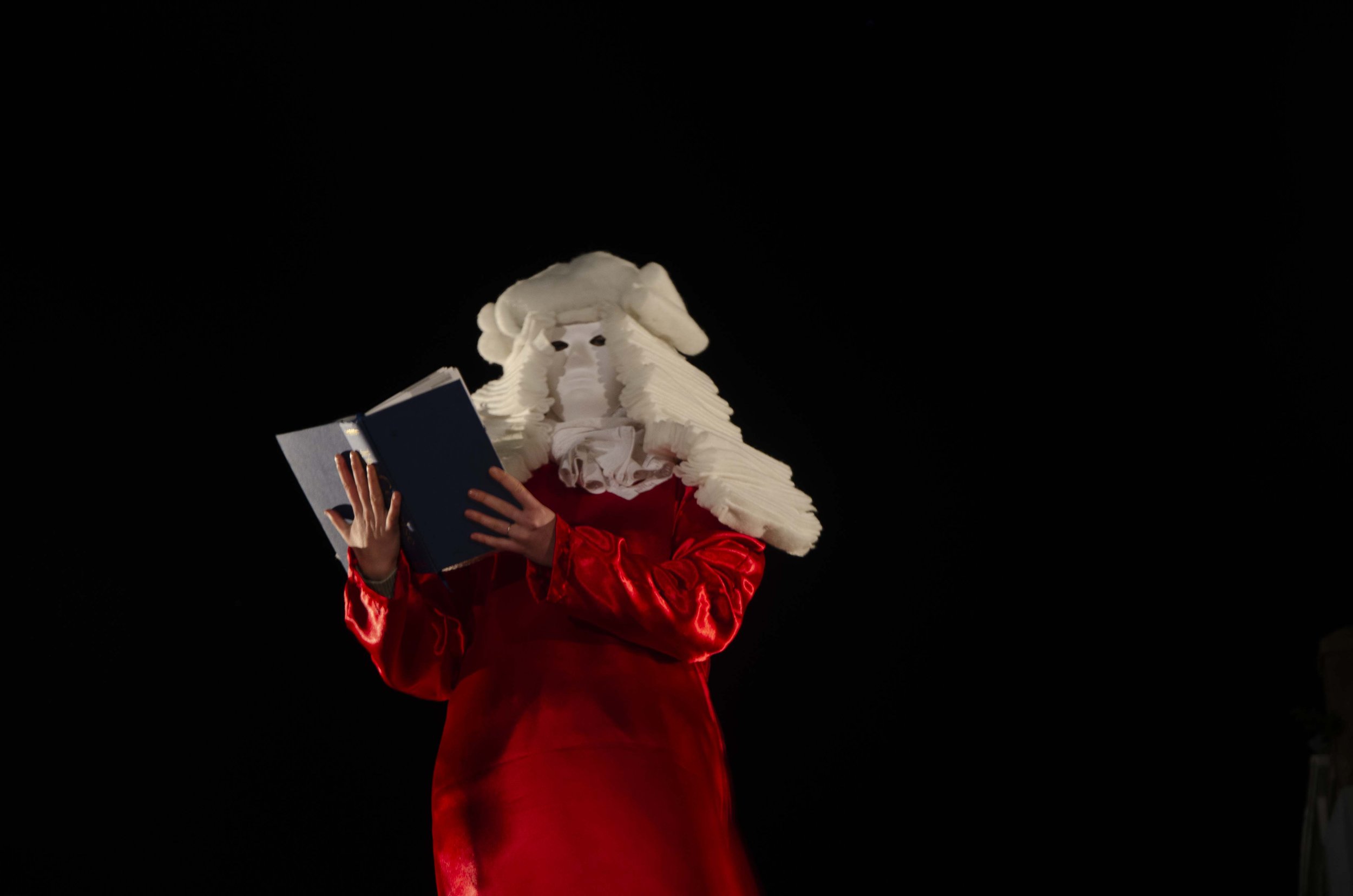
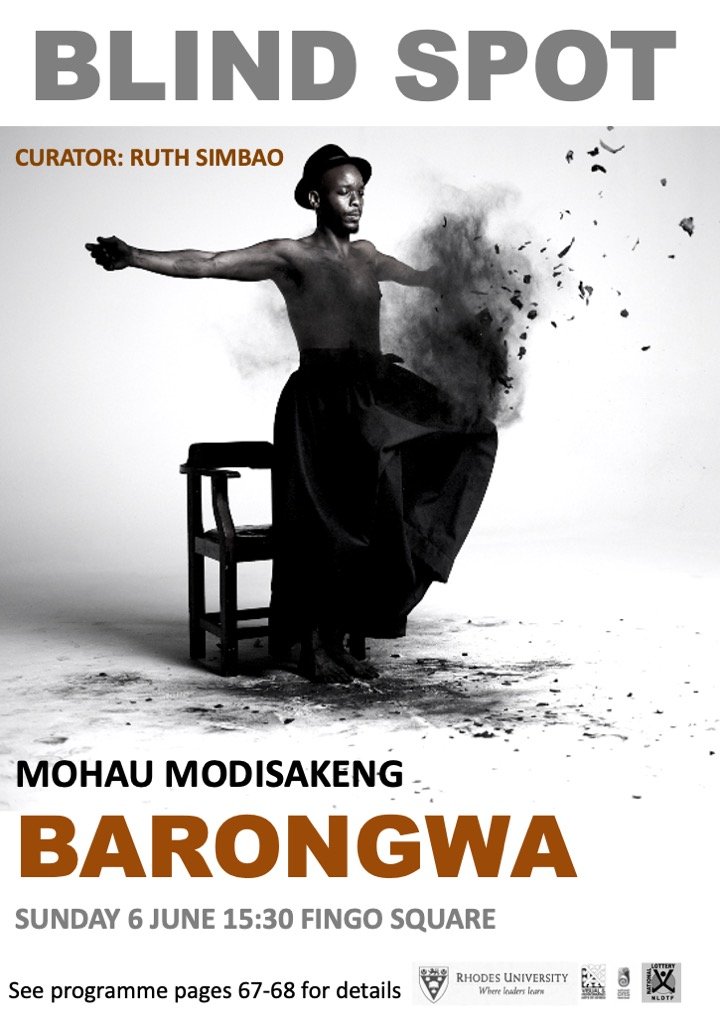









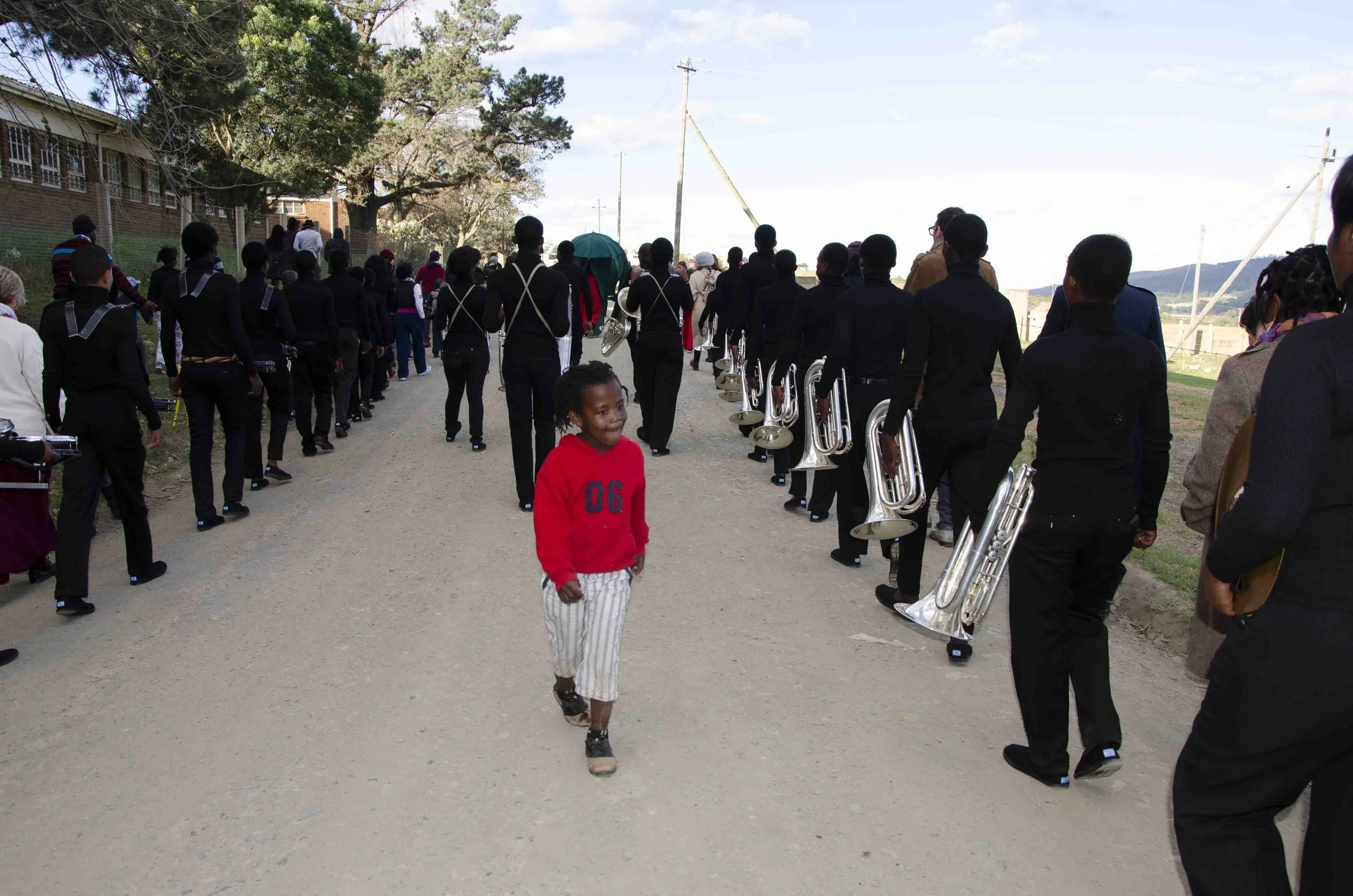
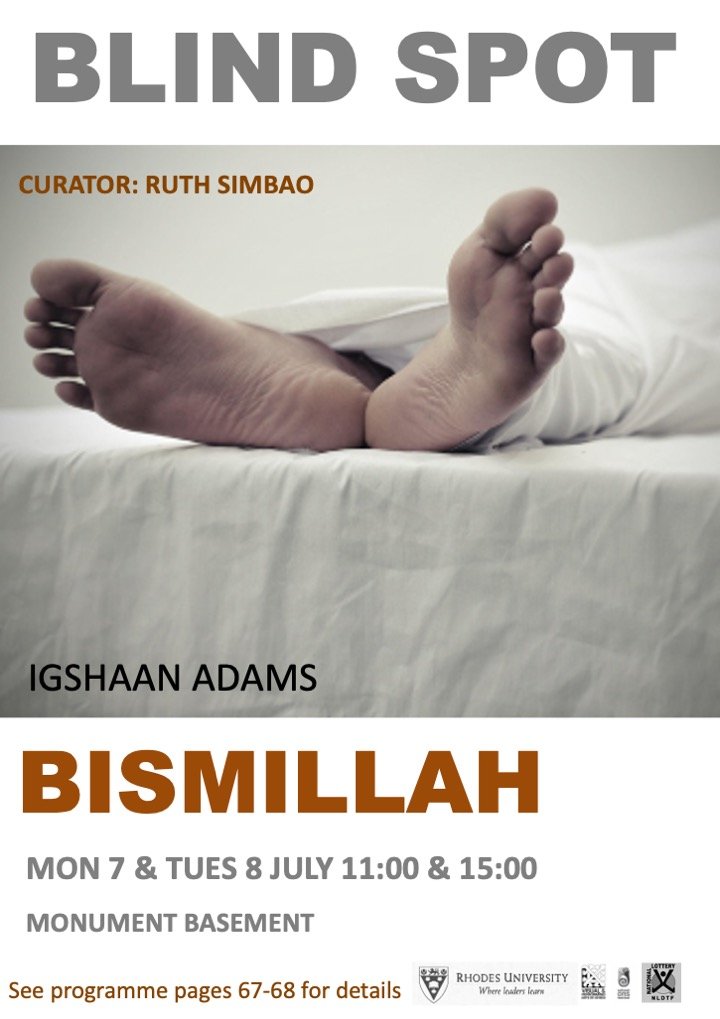
Special Project Tomorrows/Today at the Cape Town Art Fair co-curated with Azu Nwagbogu in 2016. Nwagbogu and I selected the following artists for this exhibition: Rehema Chachage, Matthias Chirombo, Thania Petersen, Lady Skollie, Gresham Tapiwa Nyaude, Ruby Onyinyechi Amanze, Kyle Morland and Masimba Hwati. See Artthrob online magazine for a Q&A with the curators. Please do not use images without written permission.


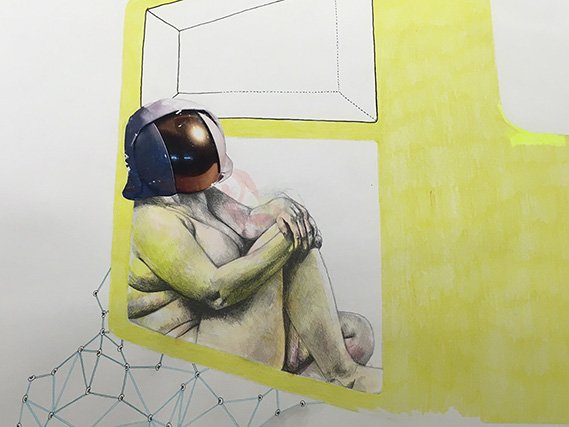





















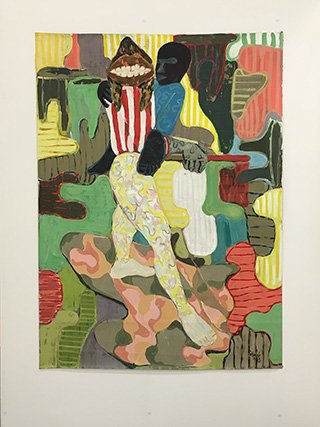




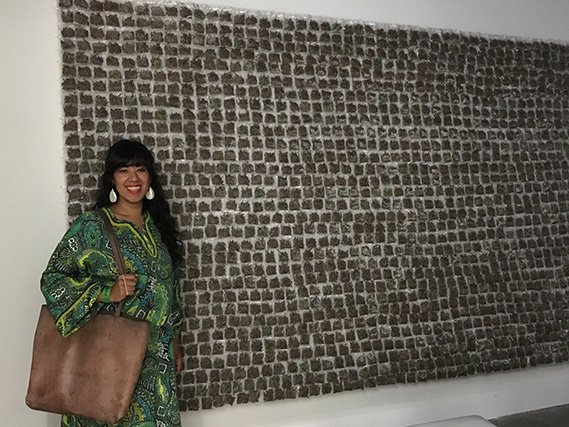





Making Way: Contemporary Art from South Africa and China was curated by Ruth Simbao for the main programme of the National Arts Festival in 2012, and it travelled to the Standard Bank Art Gallery in Johannesburg in 2013. In Makhanda, the venues included the Albany History Museum; the Provost (an old prison); Fort Selwyn; an outdoor space by the 1820 Settlers National Monument; and various outdoor spaces downtown. The exhibition explored the ways that contemporary artists based in South Africa and China engage with new paths of movement, with economic and cultural shifts, and with the rise of new regimes, new leaders and new social and urban spaces. The emphasis was on the physical pain and emotional trauma that is often involved in involuntary movement and migration. This was the first time that internationally acclaimed Chinese artists, Wu Junyong, Chen Qiulin, Maleonn and Qin Ga exhibited in South Africa. Other artists included Thenjiwe Nkosi, Lebogang Rasethaba, Gerald Machona, Michael MacGarry, James Webb, Brent Meistre, Hua Jiming, Randolph Hartzenberg, Dan Halter, Kudzanai Chirurai and Doung Anwar Jahangeer. Photographs by Ruth Simbao and Paul Greenway. Please do not use images without written permission.






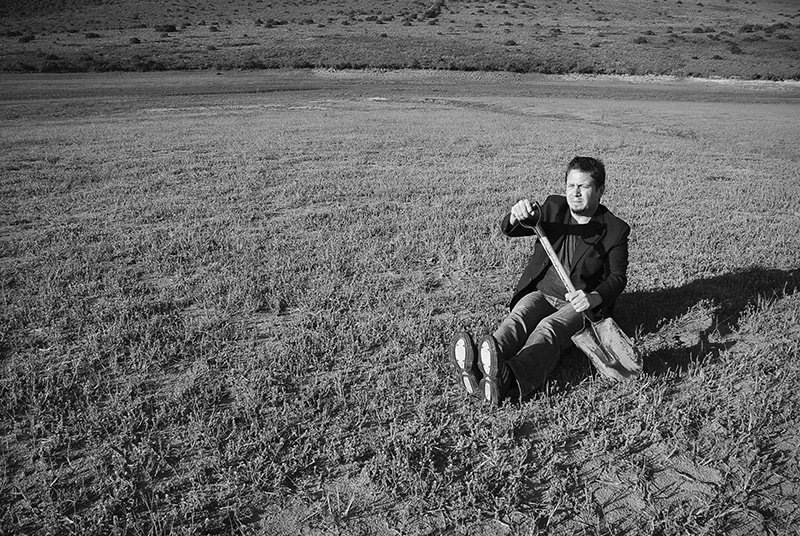





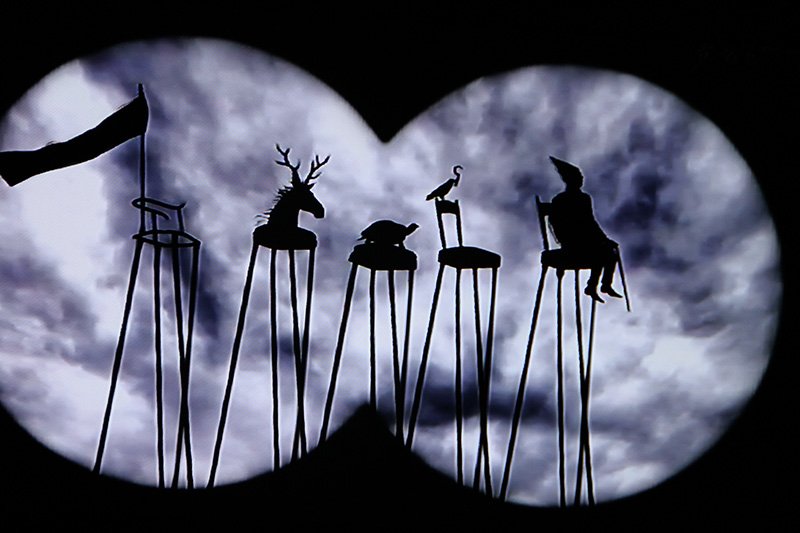




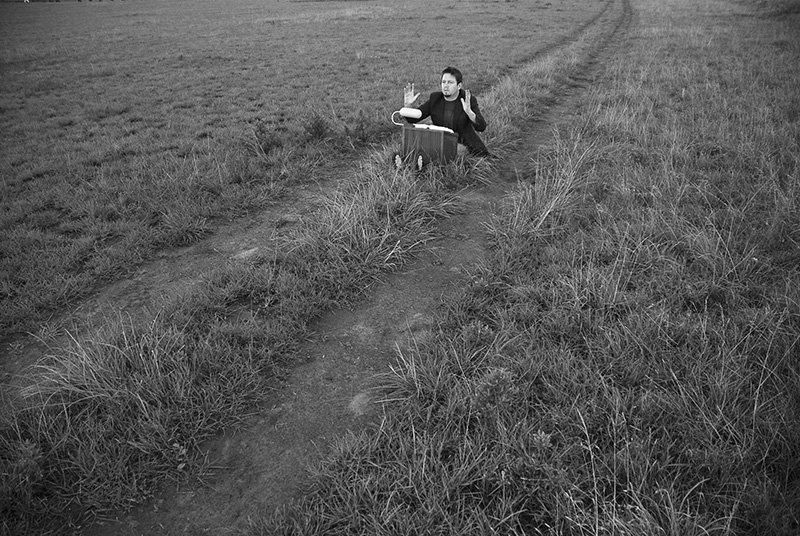




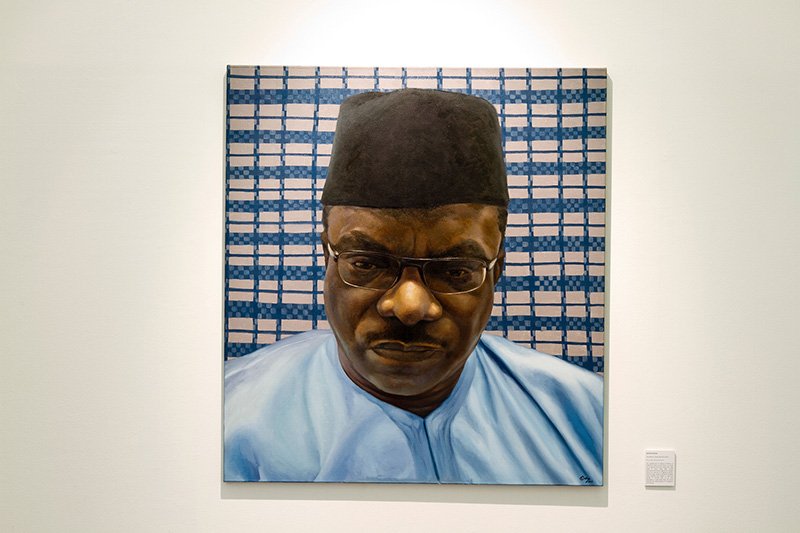

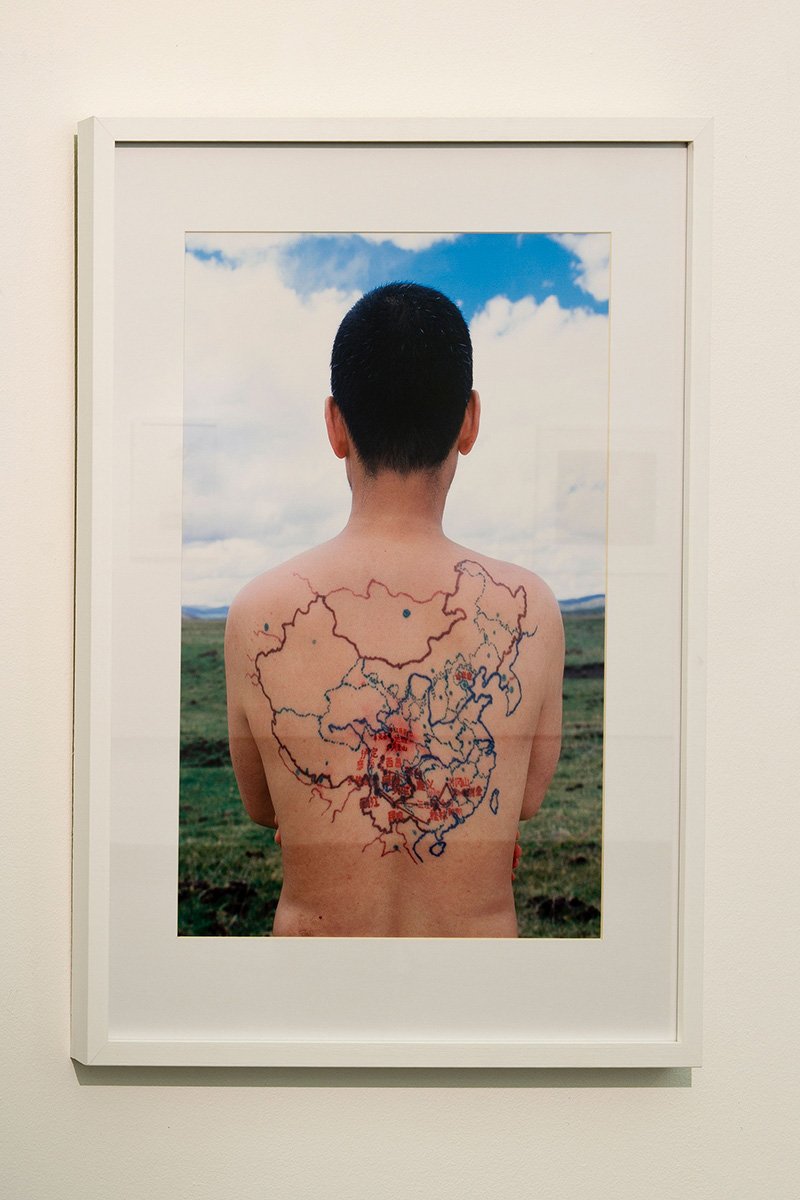


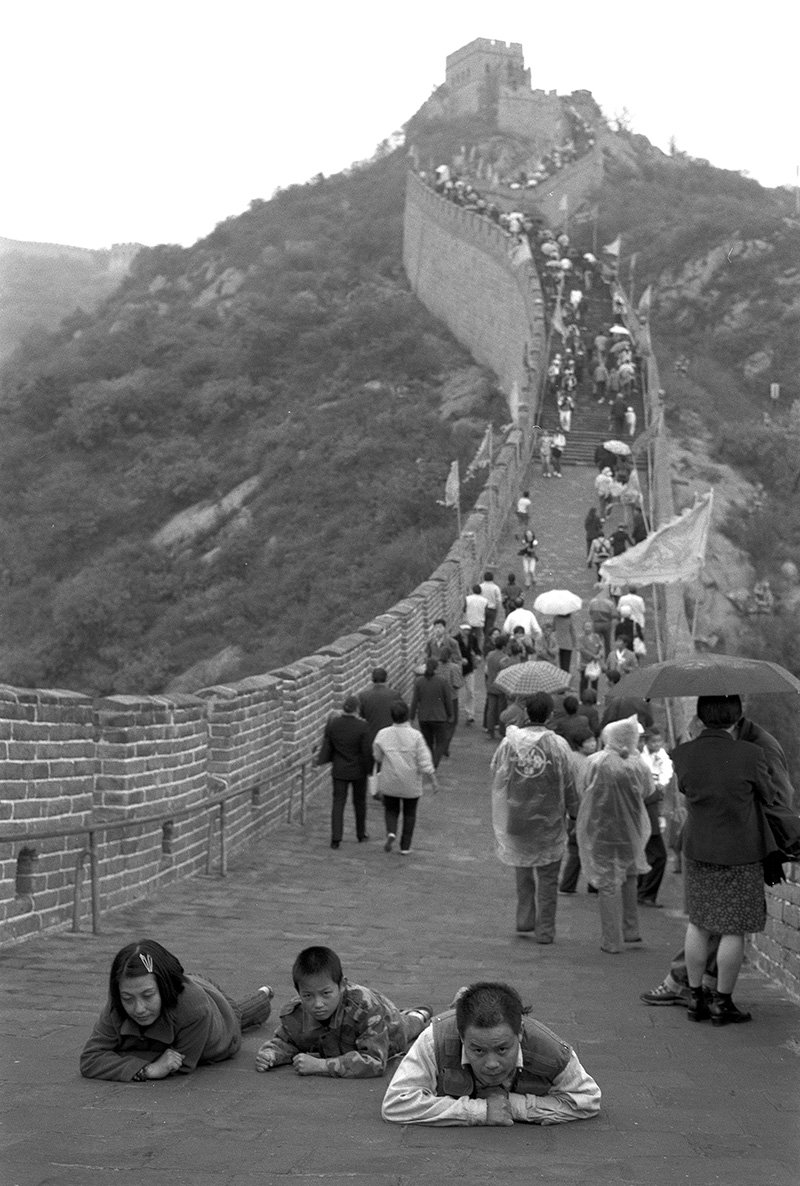









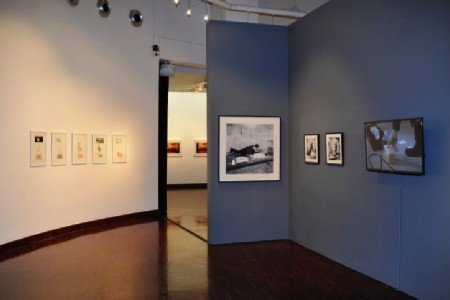



Athi-Patra Ruga created three performances for the Making Way exhibition, two in Makhanda and one in Johannesburg. The Future White Woman of Azania (images below) was performed at the Provost (an old colonial military prison). Performance Obscura/Future White Woman of Azania was performed on the streets of Makhanda, starting from 19th century camera obscura and ending by the statue that commemorates the Boer War (now named the South African War) near Bathurst Street. The performance at the Provost engaged with the colonial prison in a site-specific way. The building is based on a panopticon design, and Ruga’s performance, which took place upstairs in the guard’s tower, challenged issues of power and control. All photographs by Ruth Simbao. Please do not use images without written permission. For Performance Obsucra see Film and Photography.
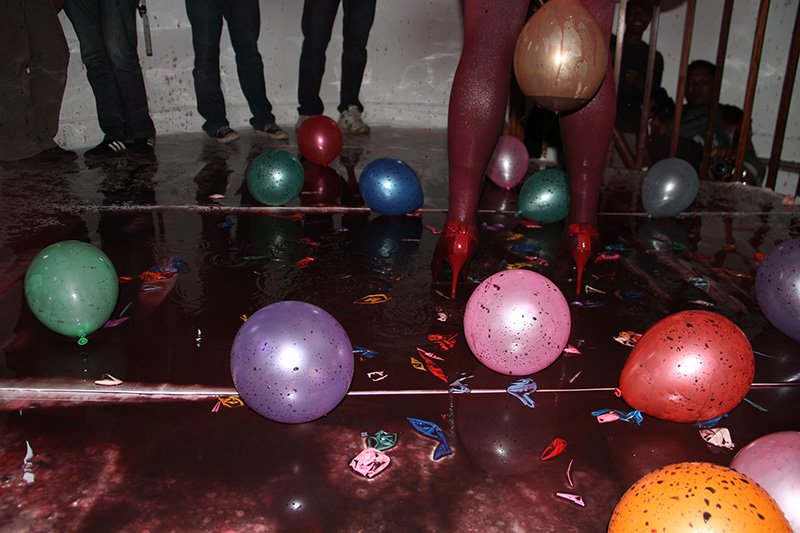
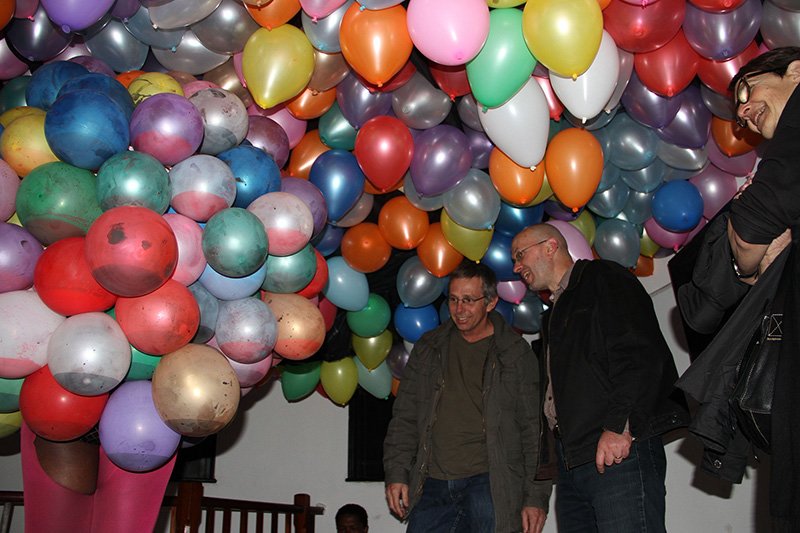



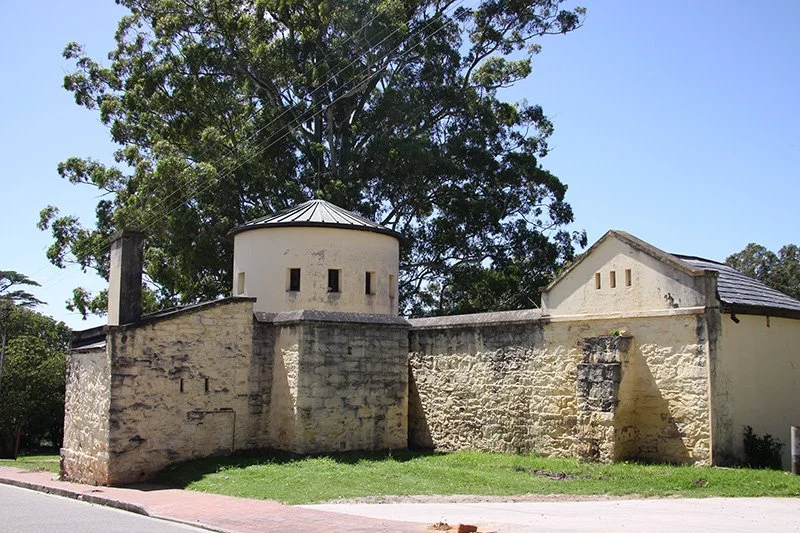
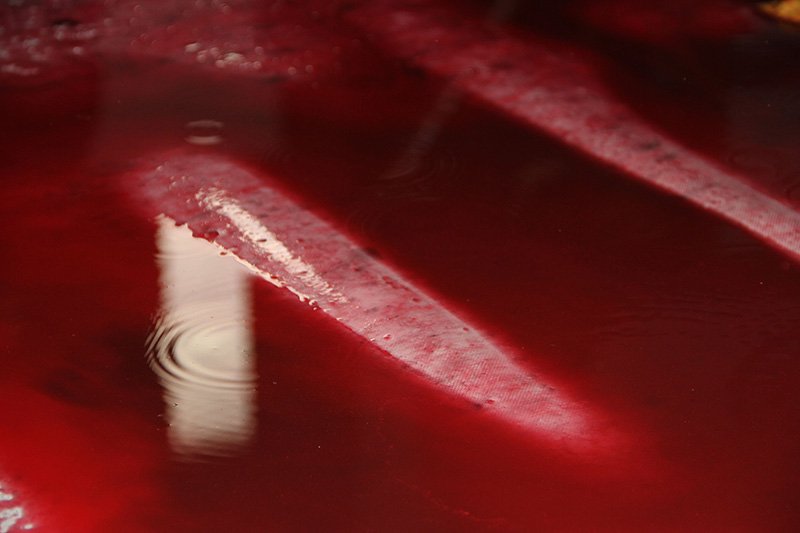









Collaborating with Chinyanta Mwenya, Gerald Machona created the performance From China with Love (2012) in the Albany Museum for the Making Way exhibition. He explored China’s rise as a new superpower, its new economic ties with African nations and, in particular, its impact on local street traders in Zimbabwe. In line with his broader use of decommissioned Zimbabwean dollars as an aesthetic medium, he carefully stitched together three-dimensional objects such as a wallet, a watch, a pair of sunglasses and a bag. Each object had a label, “Made in China” stitched onto it, satirically contrasting the mass production of Chinese objects made for export to Africa and handcrafted objects created by local Africans. The artist then bartered with the audience in a playful process of exchange, expecting them, for example, to sing a national anthem in order to obtain one of his beautifully made art objects. He also created, If you go far enough west you end up in the east, which was a Nike shoe hand stitched from decommissioned Zimbabwean dollars, USA dollars and Chinese RMB. Images by Paul Greenway for the Making Way exhibition. Please do not use images without permission from Ruth Simbao.


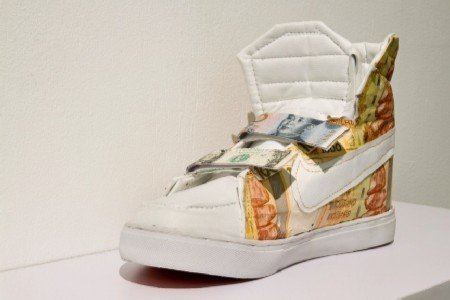

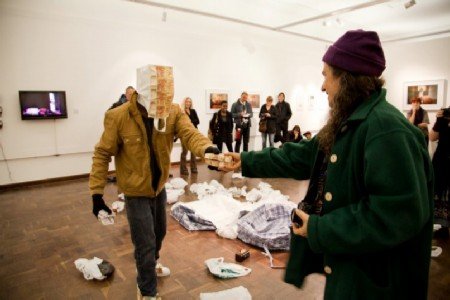

Doung Anwar Jahangeer’s participation in the Making Way exhibition included video installation as well as the live art, The Other Side: City Walk and The Other Side with the Matebese Family. These images are from the City Walk public performance, in which Jahangeer grappled with the divide between the eastern and western sections of town that still mirror apartheid racial segregation. For images of the public intervention, The Other Side with the Matebese Family, see the Film and Photography section. All photographs © Ruth Simbao. Please do not use images without written permission.

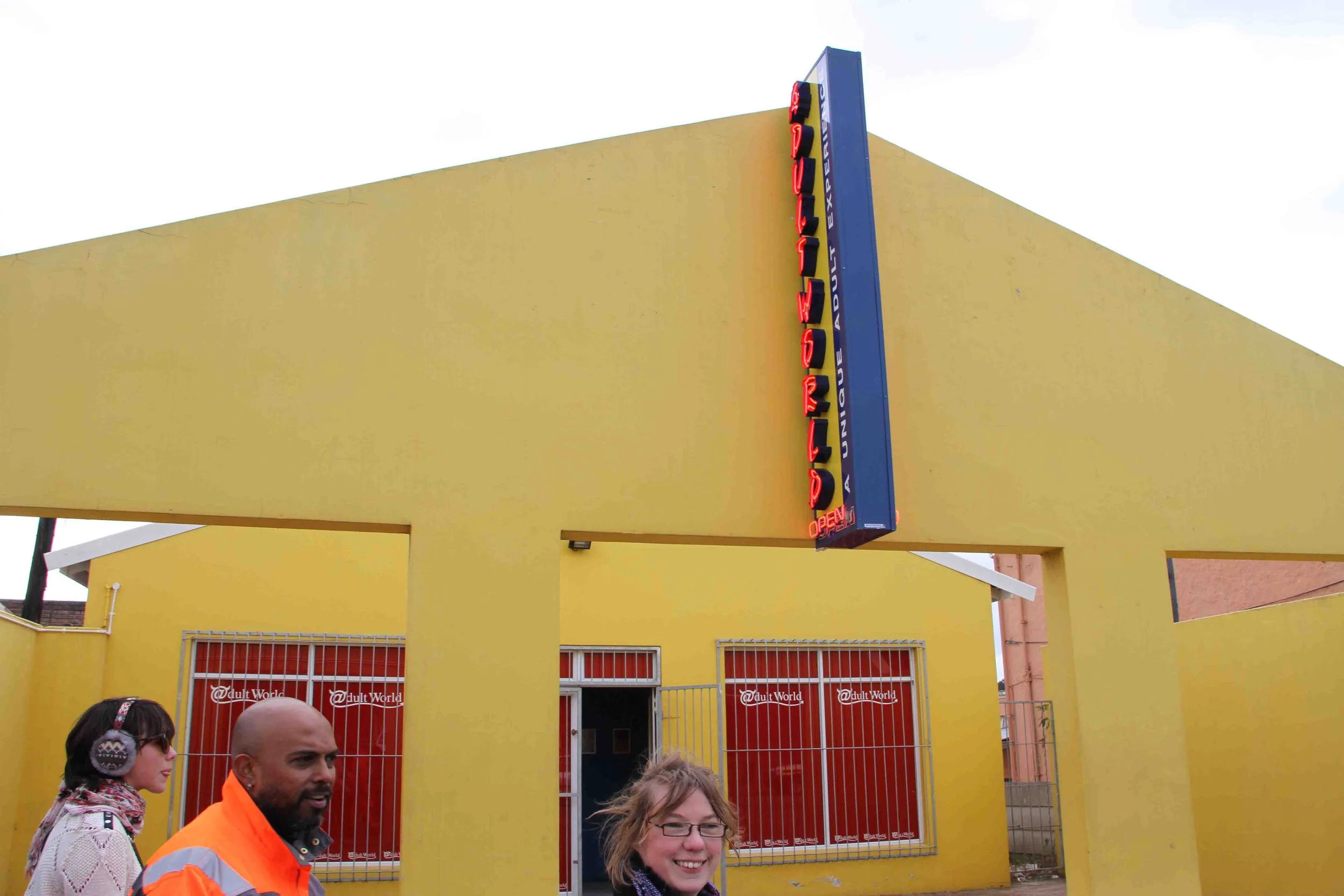

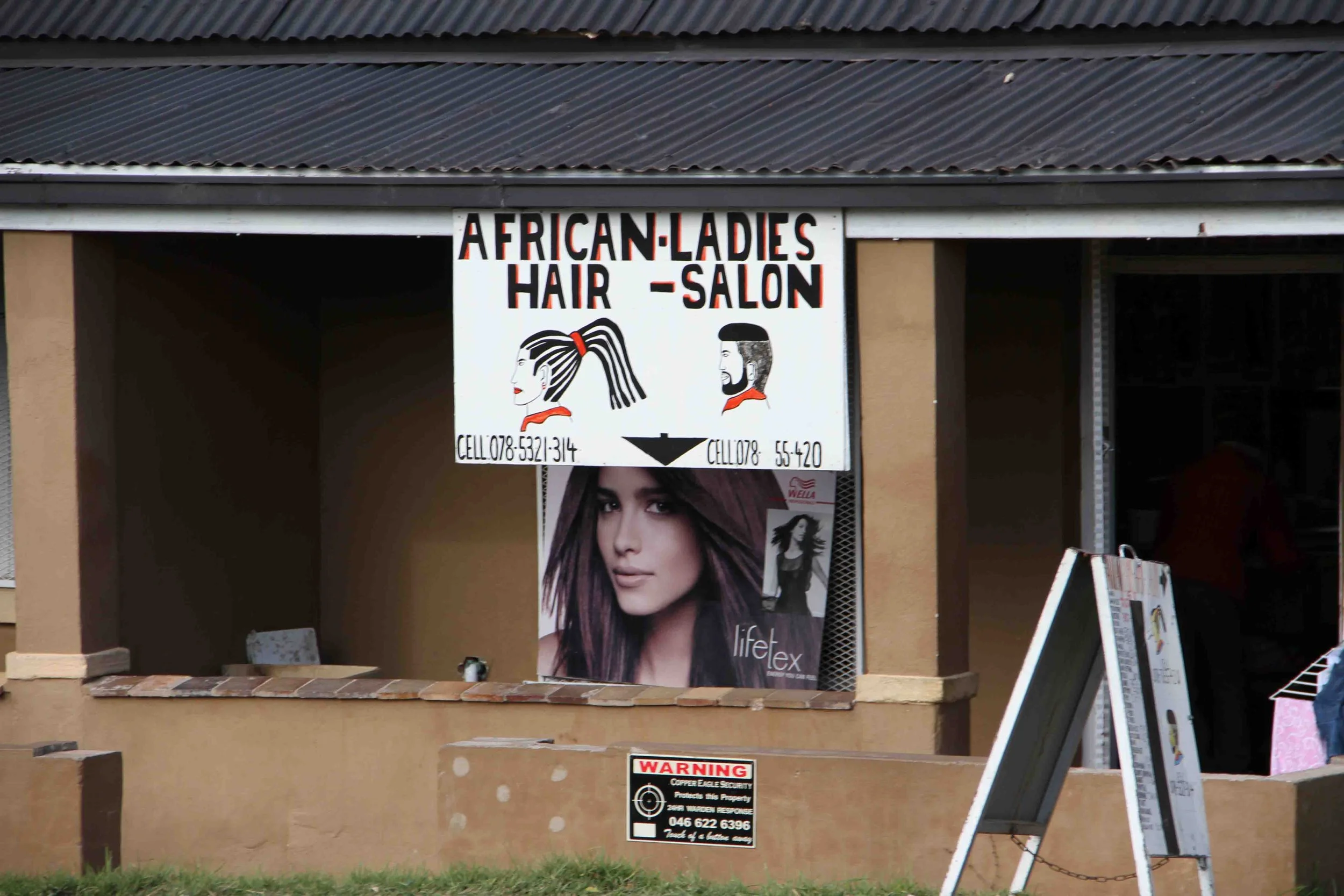
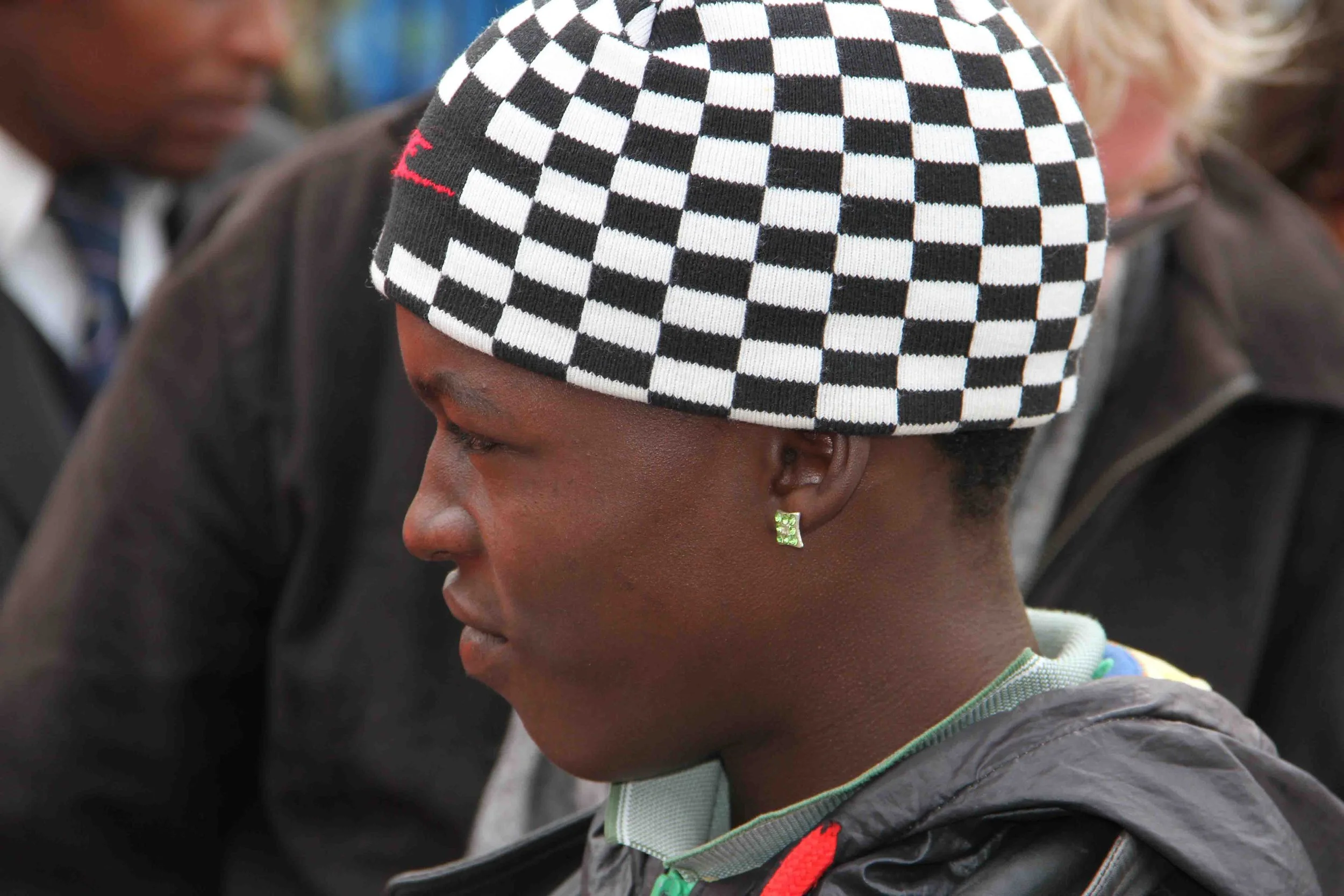
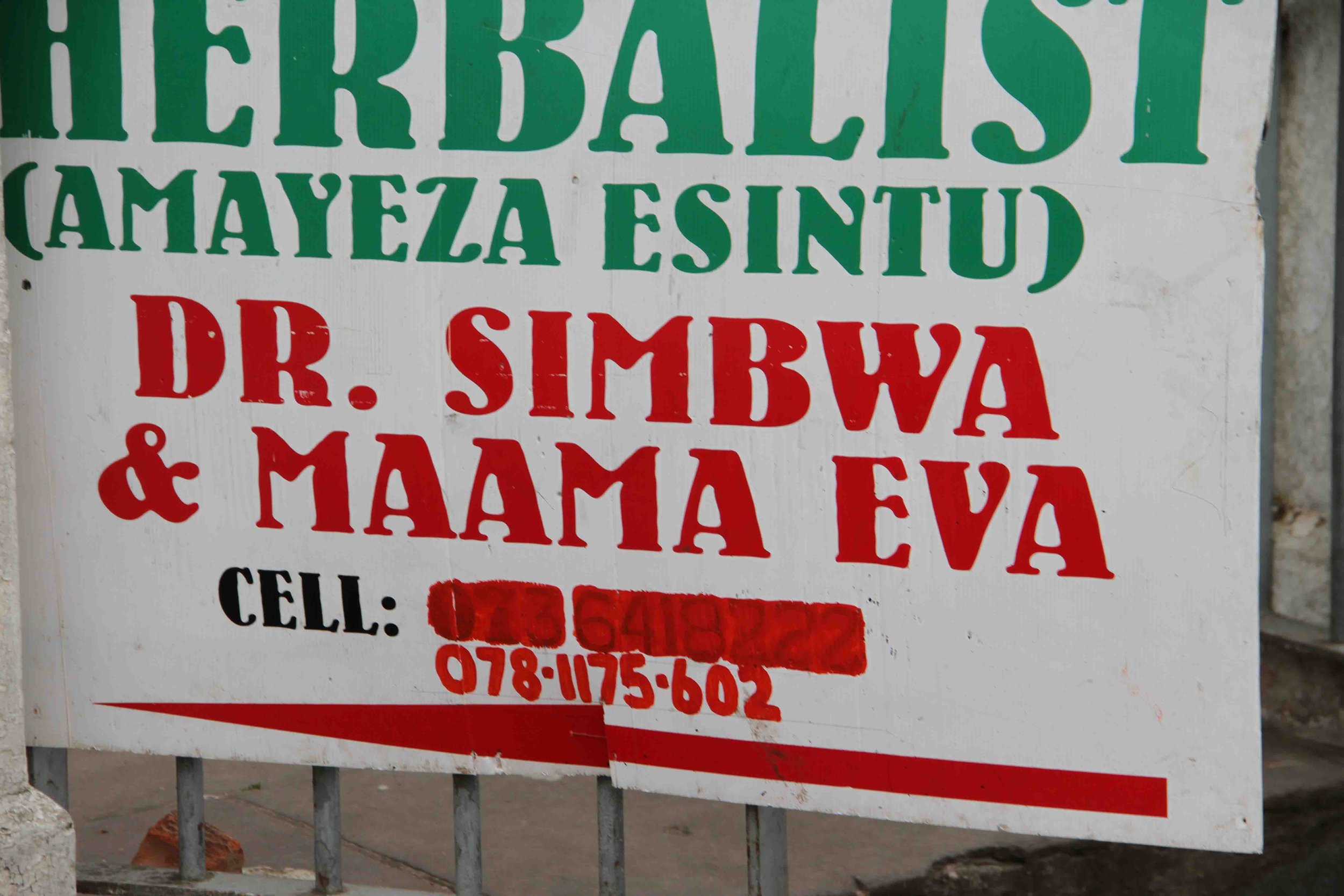
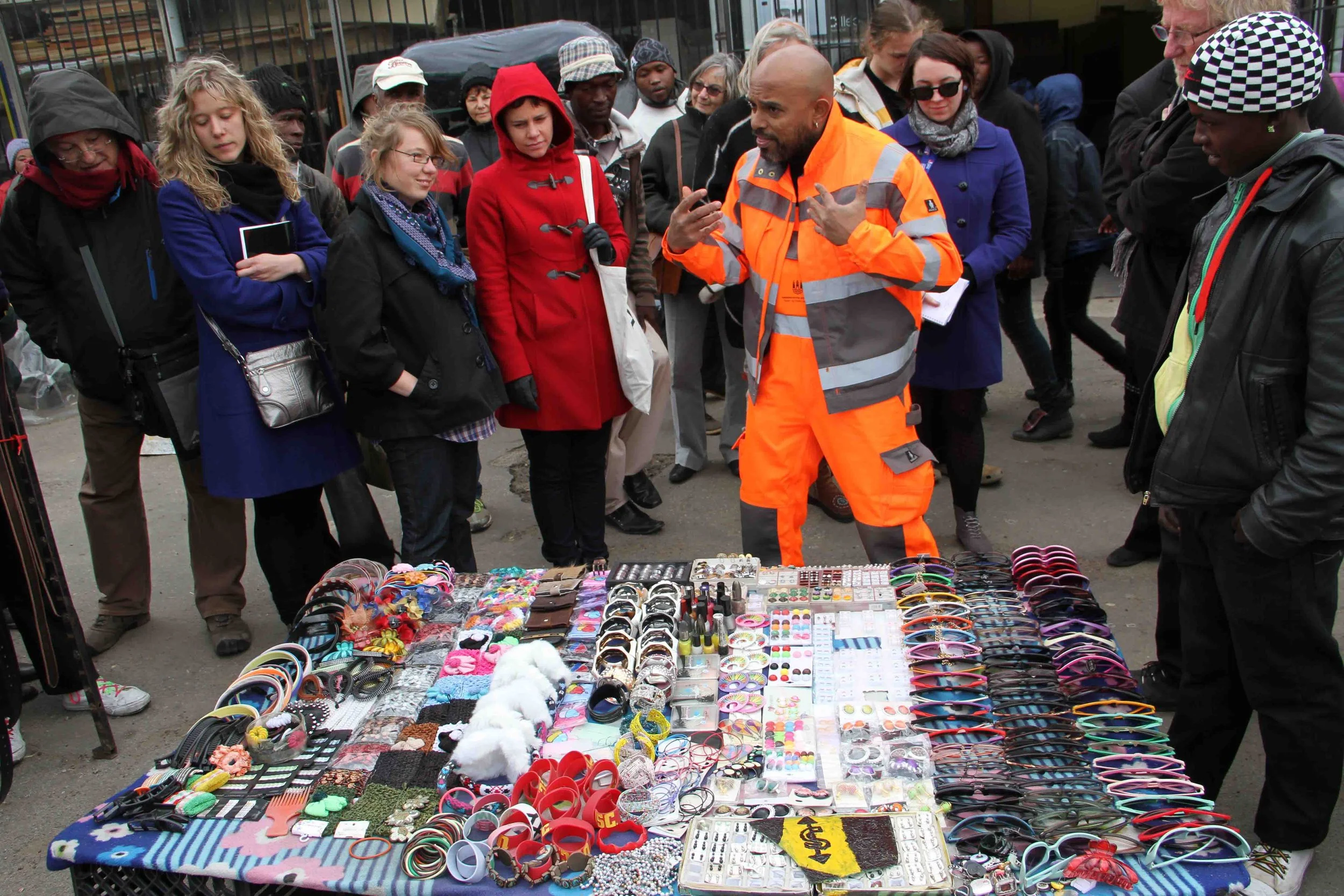
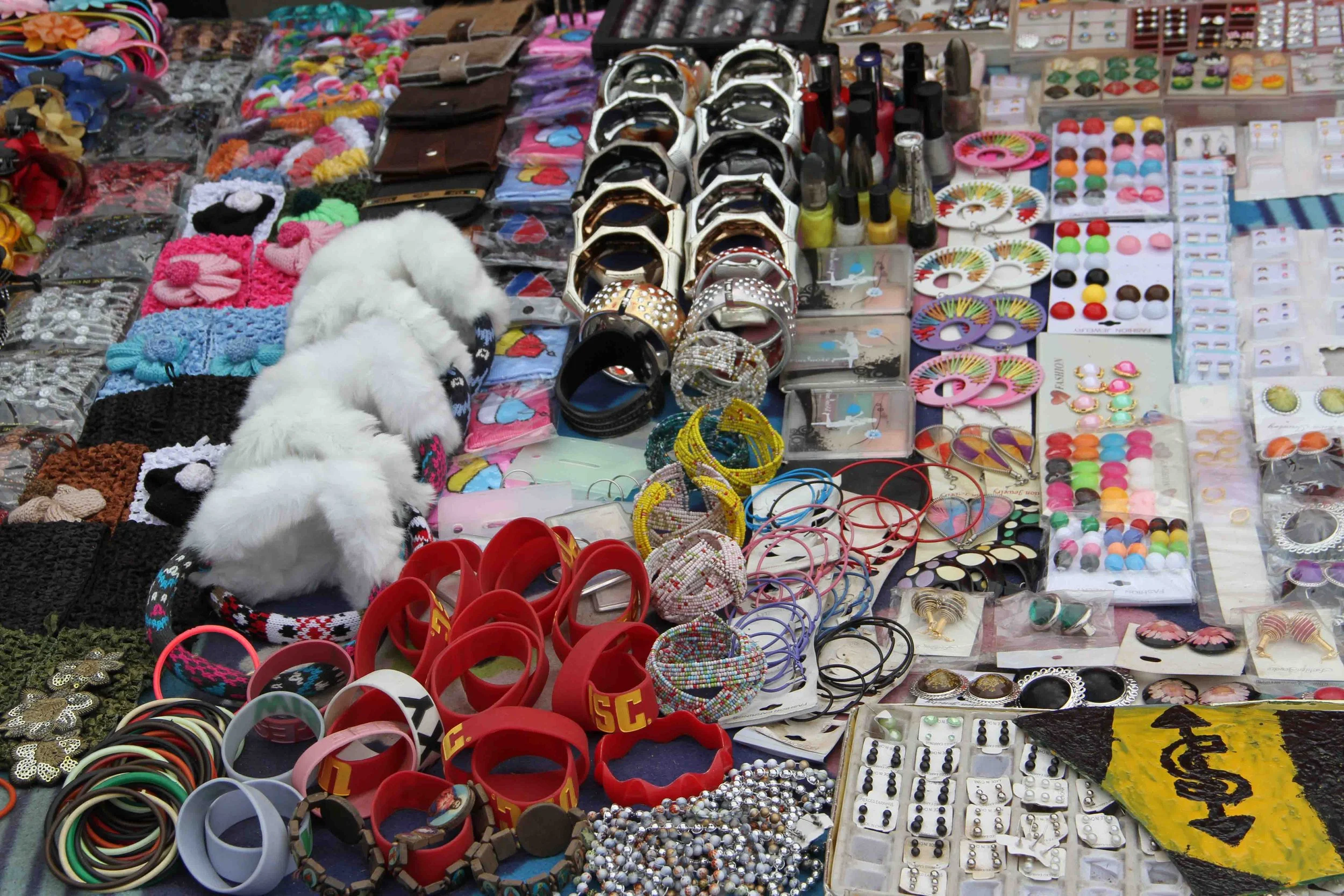
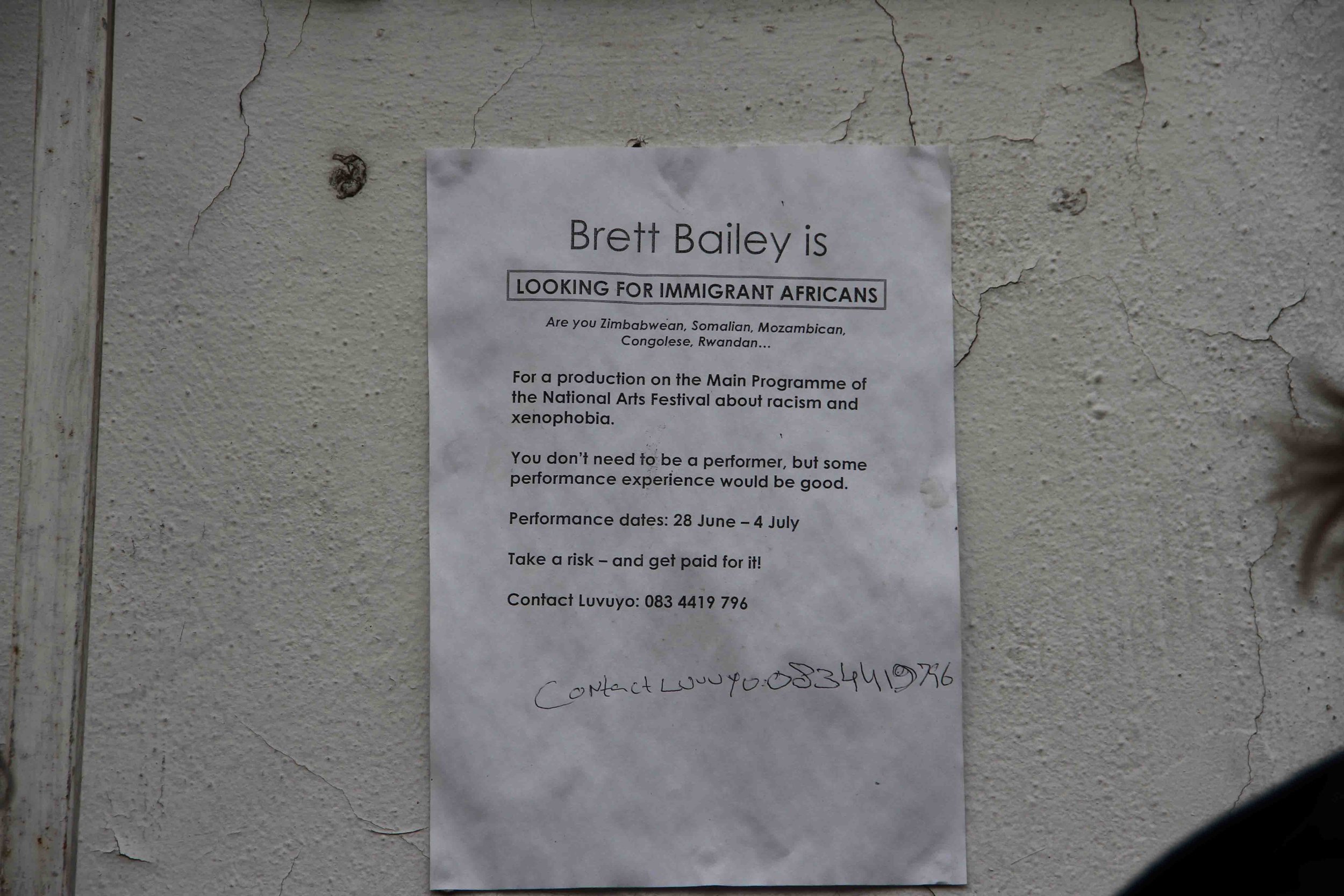
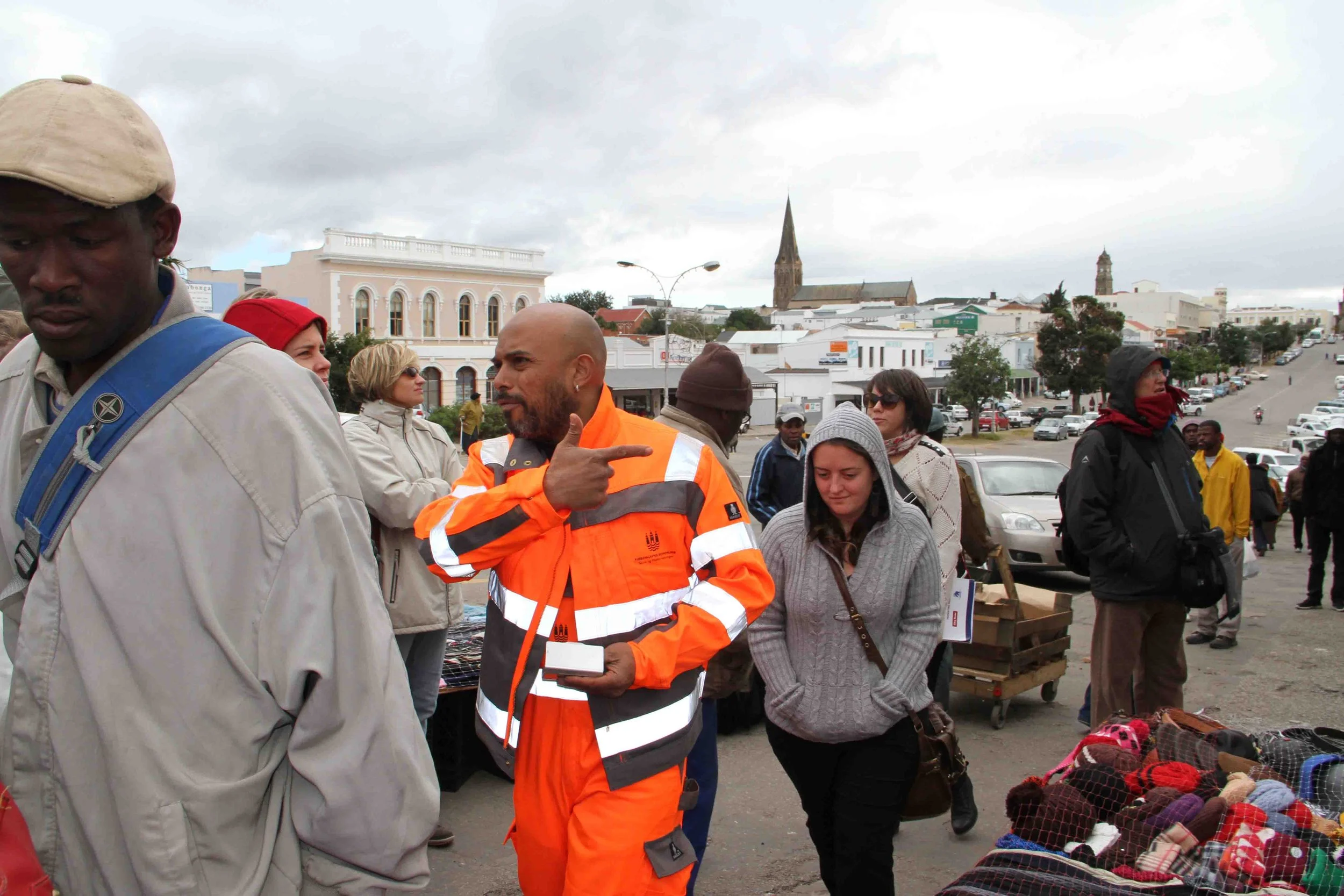
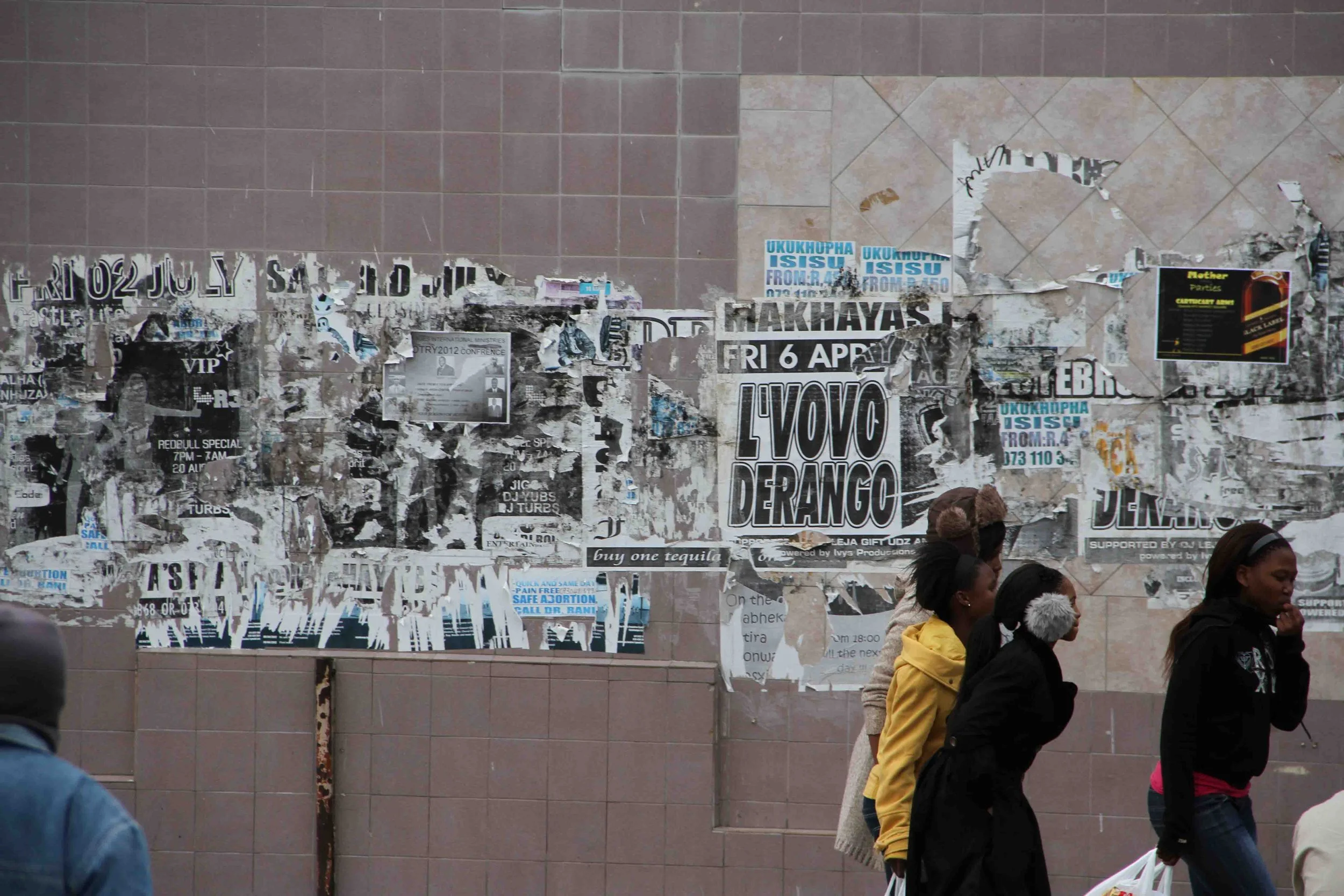
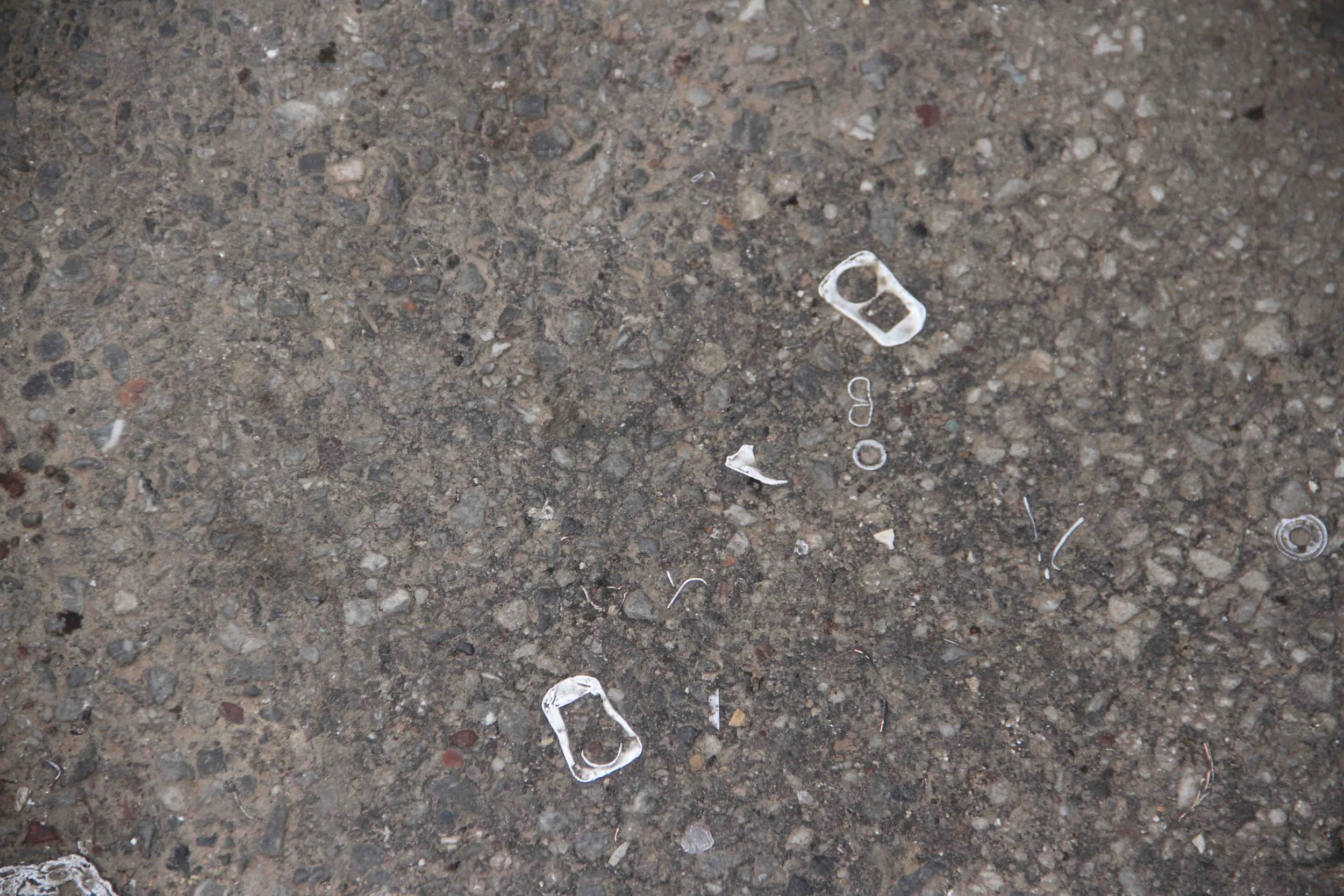
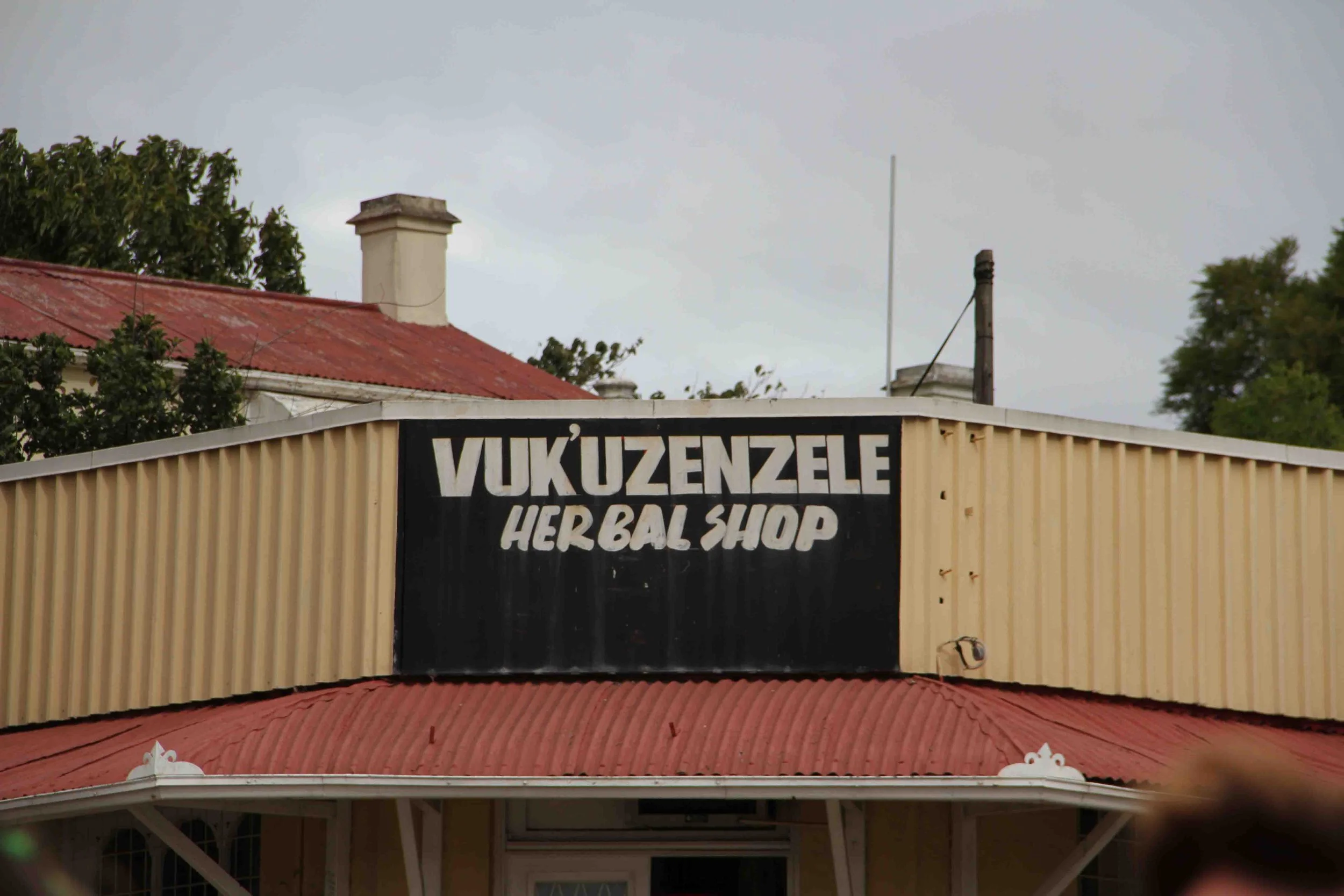
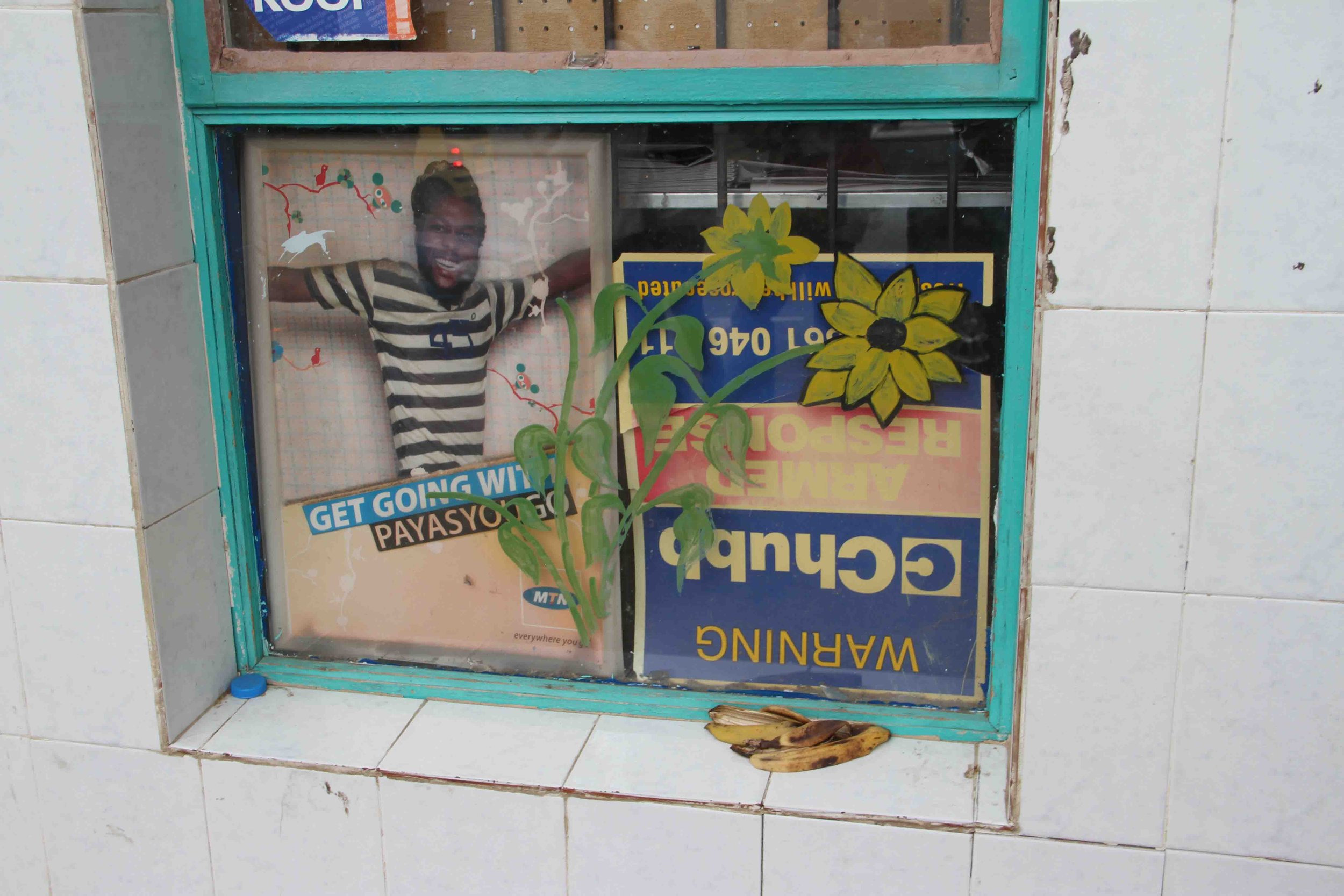
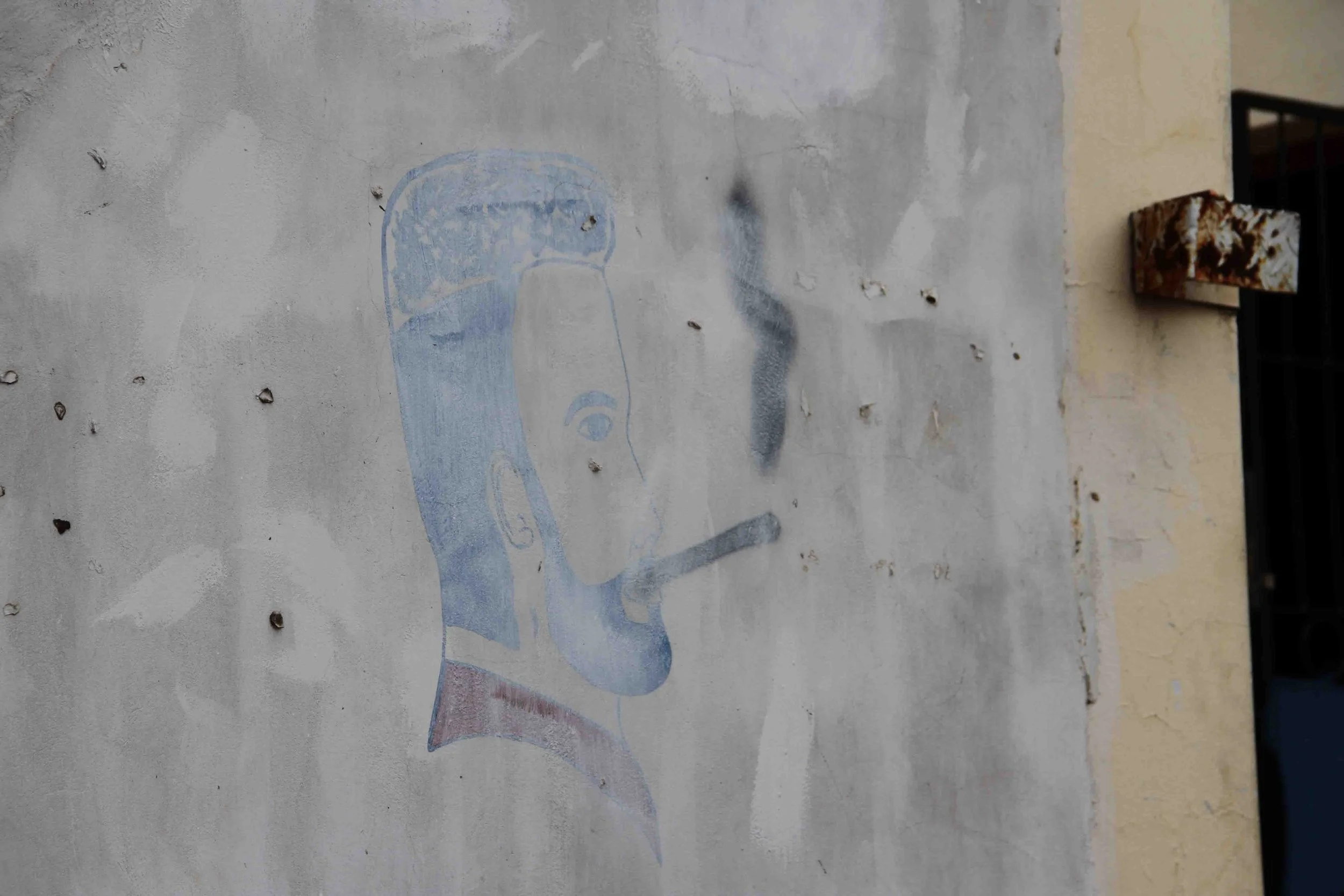
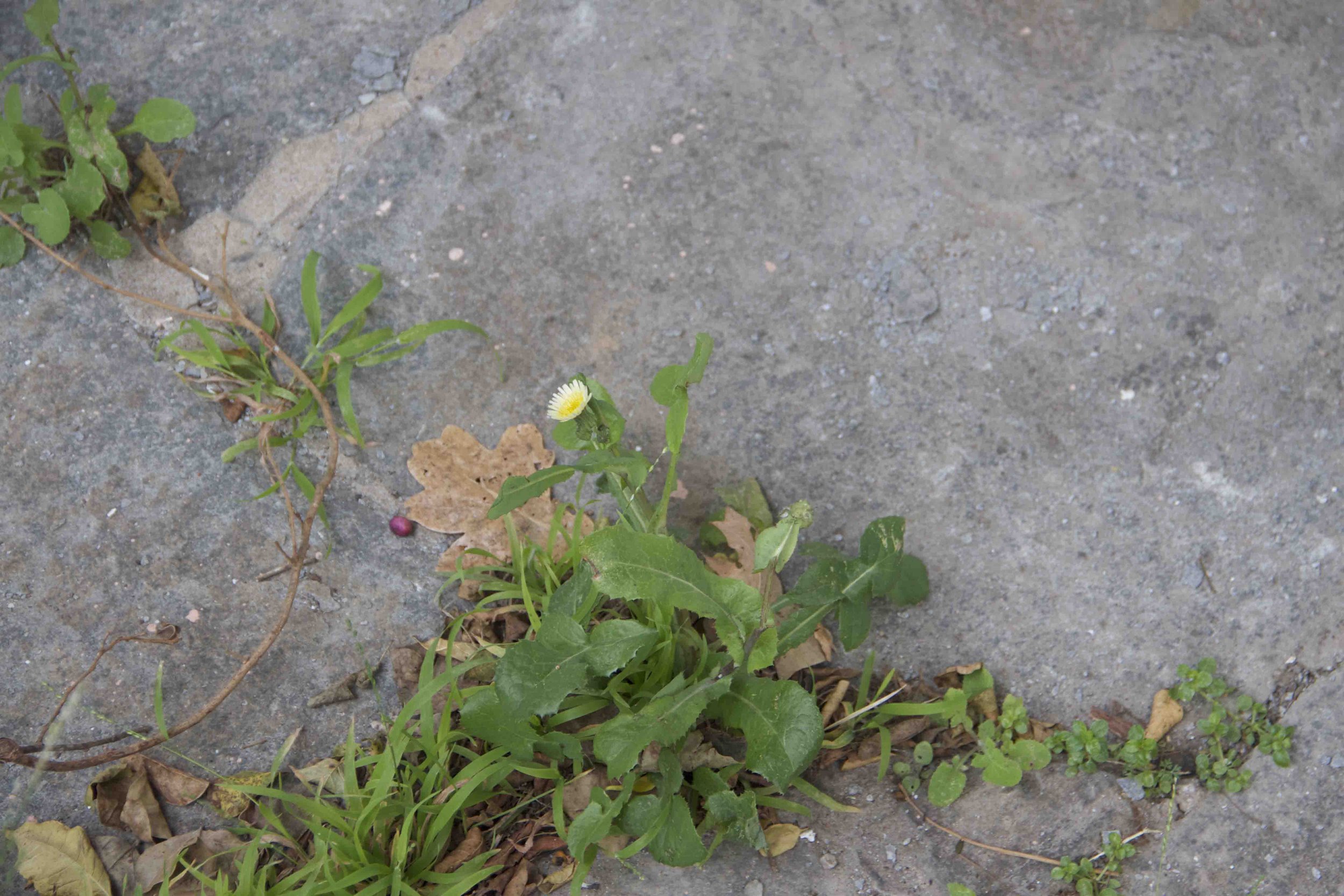




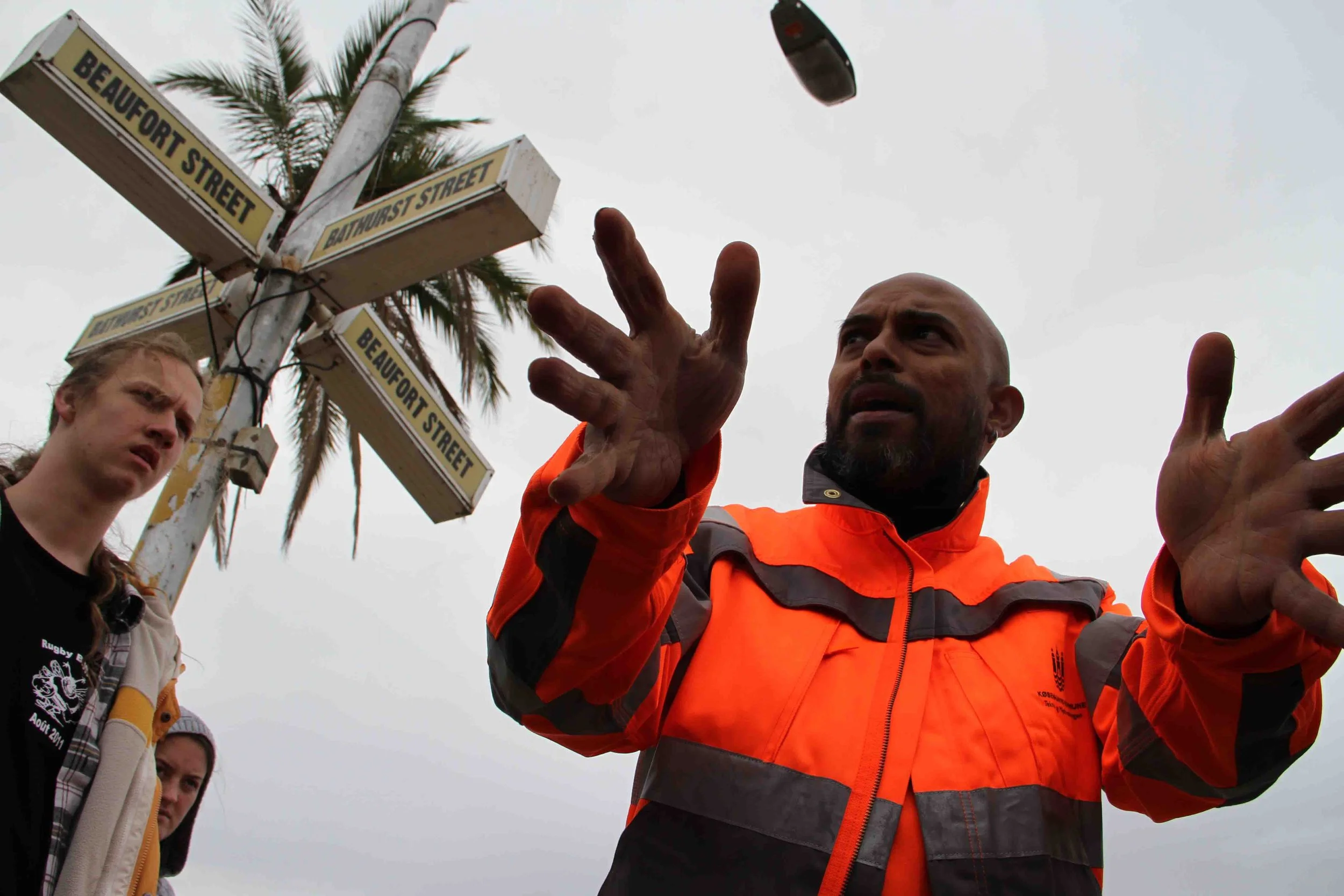
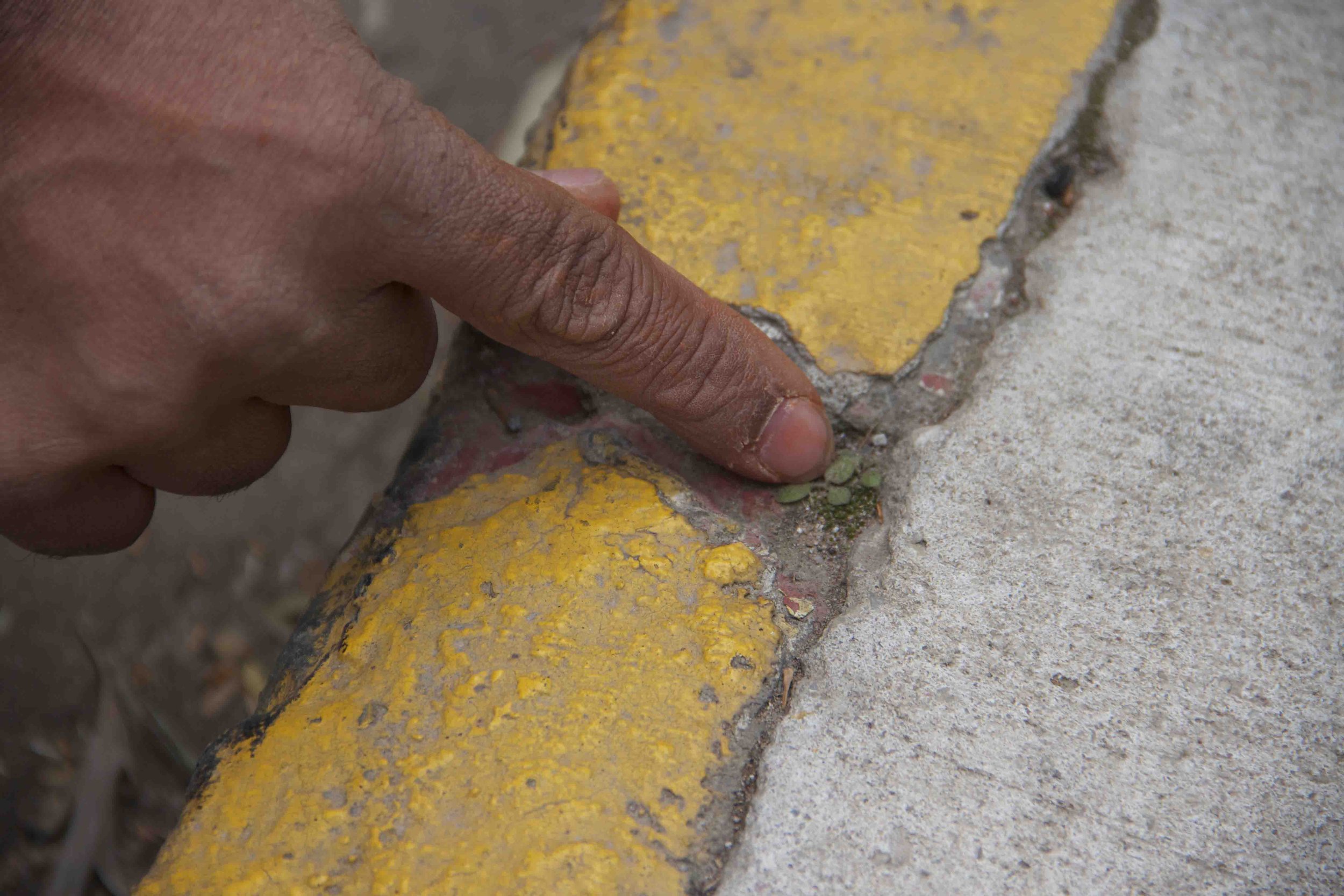

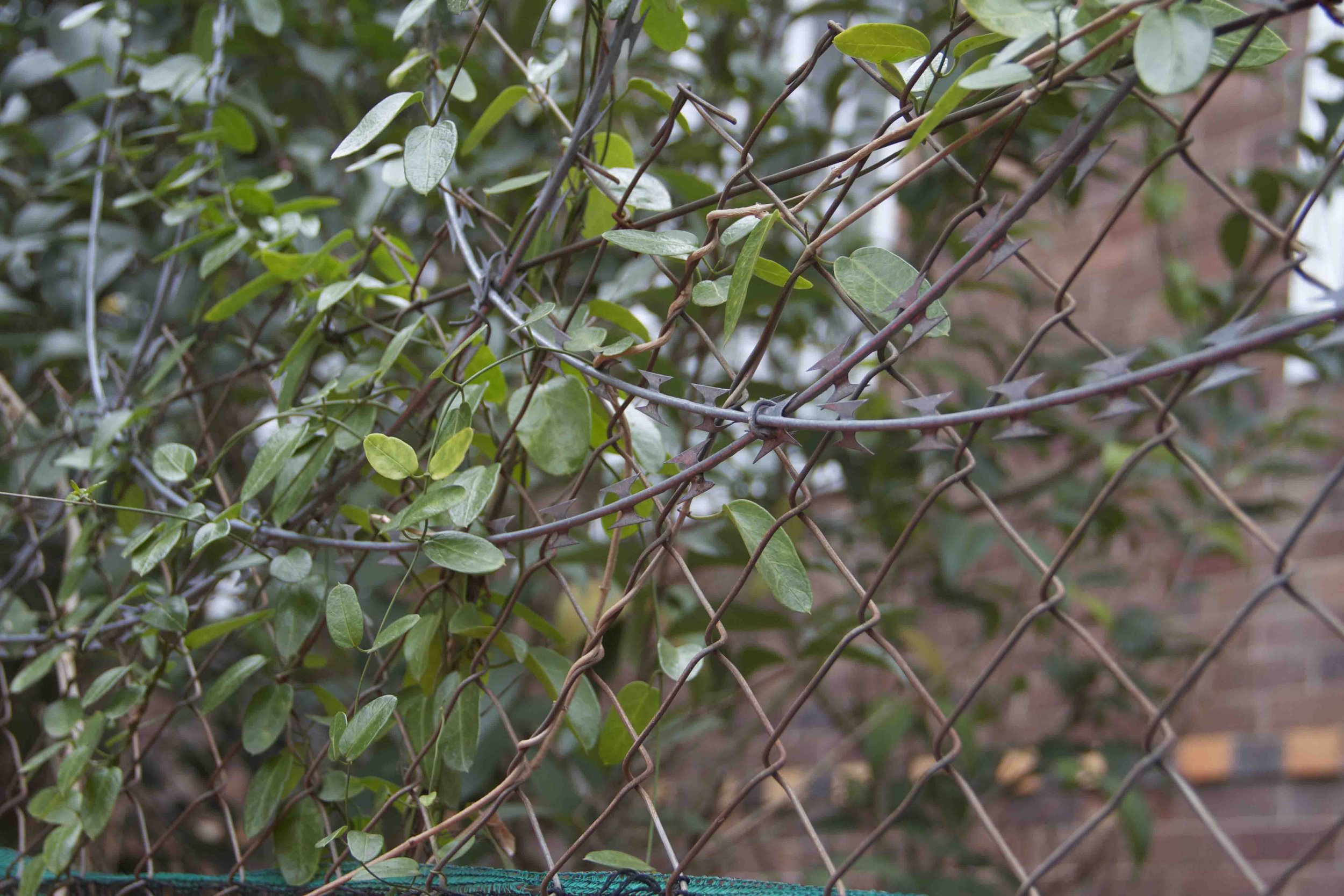

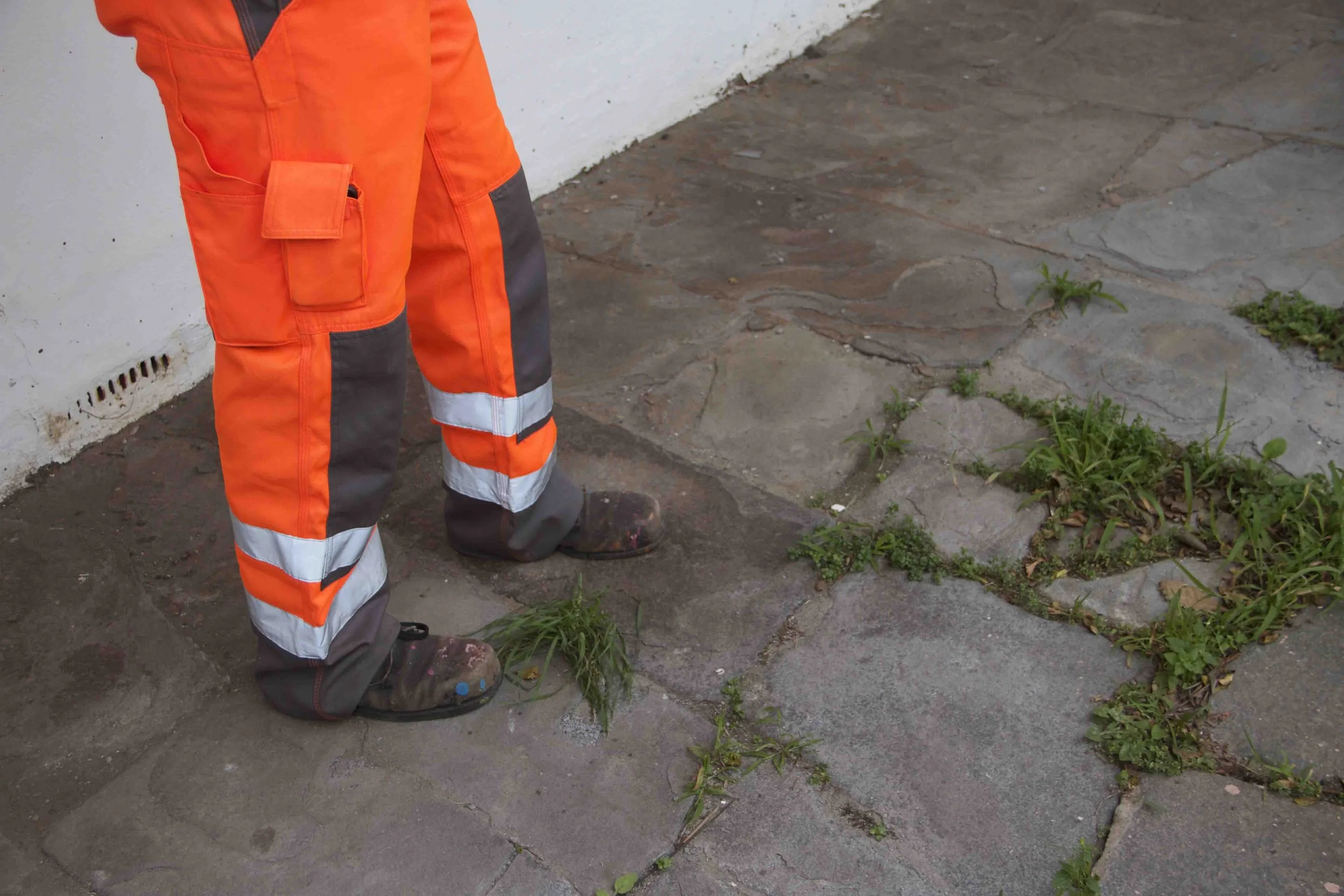
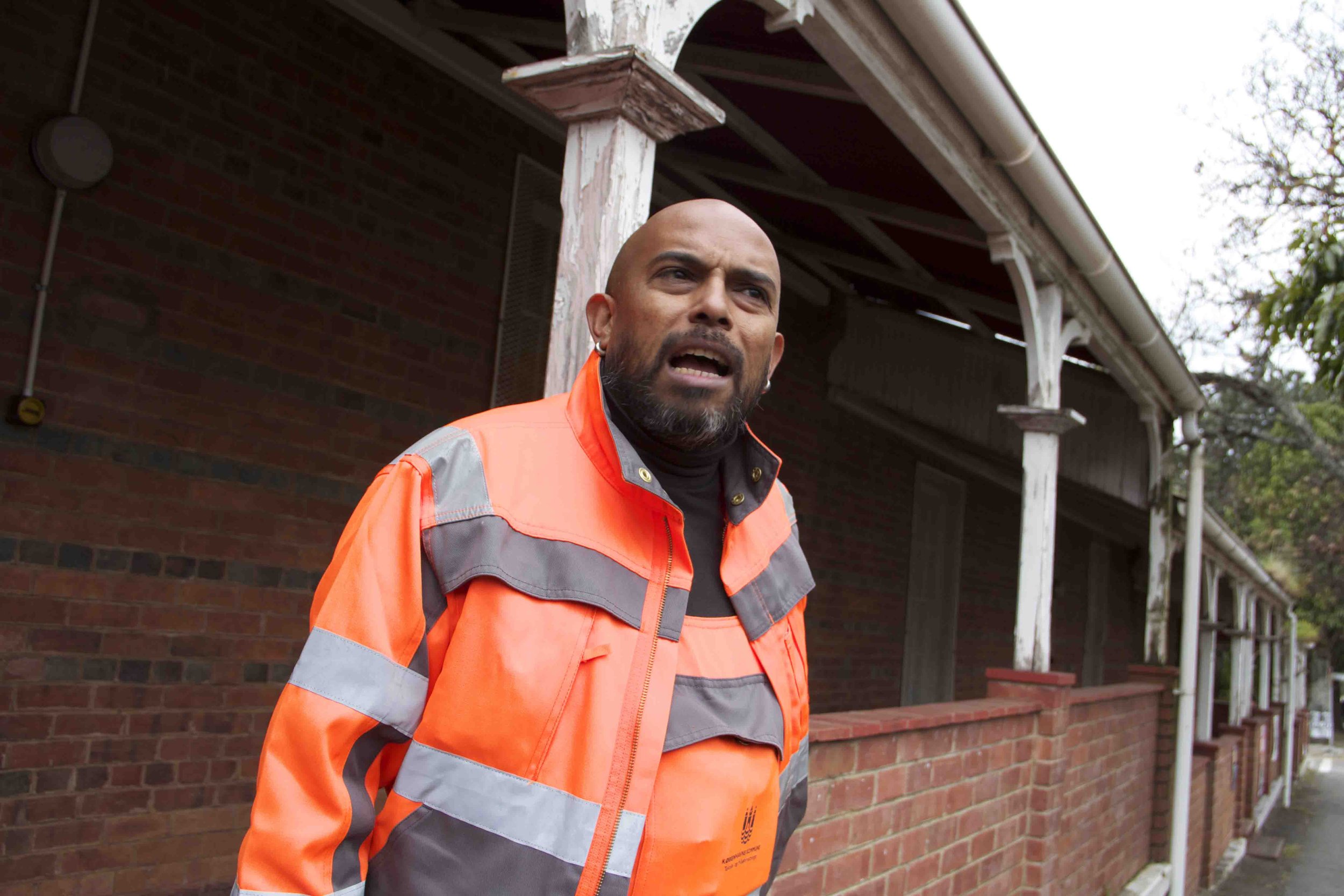
Randolph Hartzeberg created a new performance, Three Days, for the Making Way exhibition. In this performance, he began outside Fort Selwyn, which is at the top of Gunfire Hill and looks out over Makhanda East. He then engaged performatively with his installation inside the colonial fort. All photographs © Ruth Simbao. Please do not use images without written permission. Video of the “Three Days” performance.




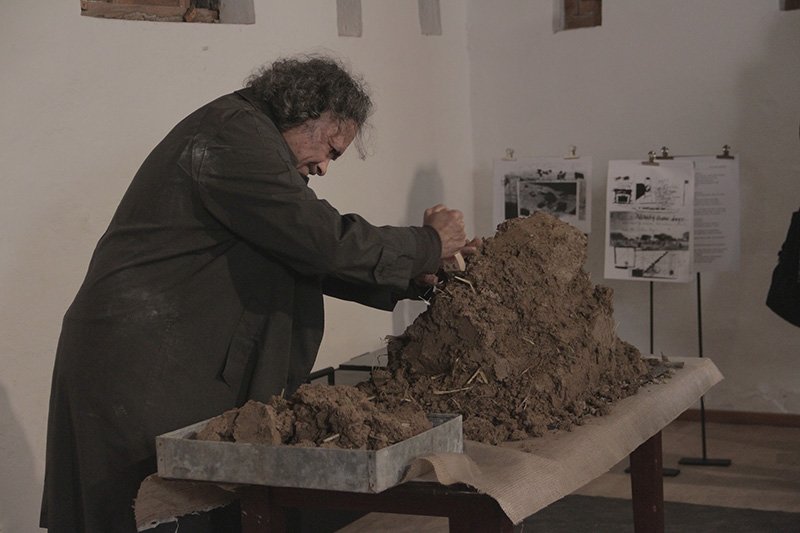
























Our inaugural exhibition at the RAW Spot Gallery coincided with the official opening of my research space and the gallery associated with my NRF Geopolitics and the Arts of Africa programme. The exhibition, Return, by Peju Layiwola, grew out of Layiwola’s Residencies for Artists and Writers (RAW) programme in Makhanda. It engaged with current debates on the repatriation of African art objects and human remains. All photographs © Ruth Simbao. Please do not use images without written permission.























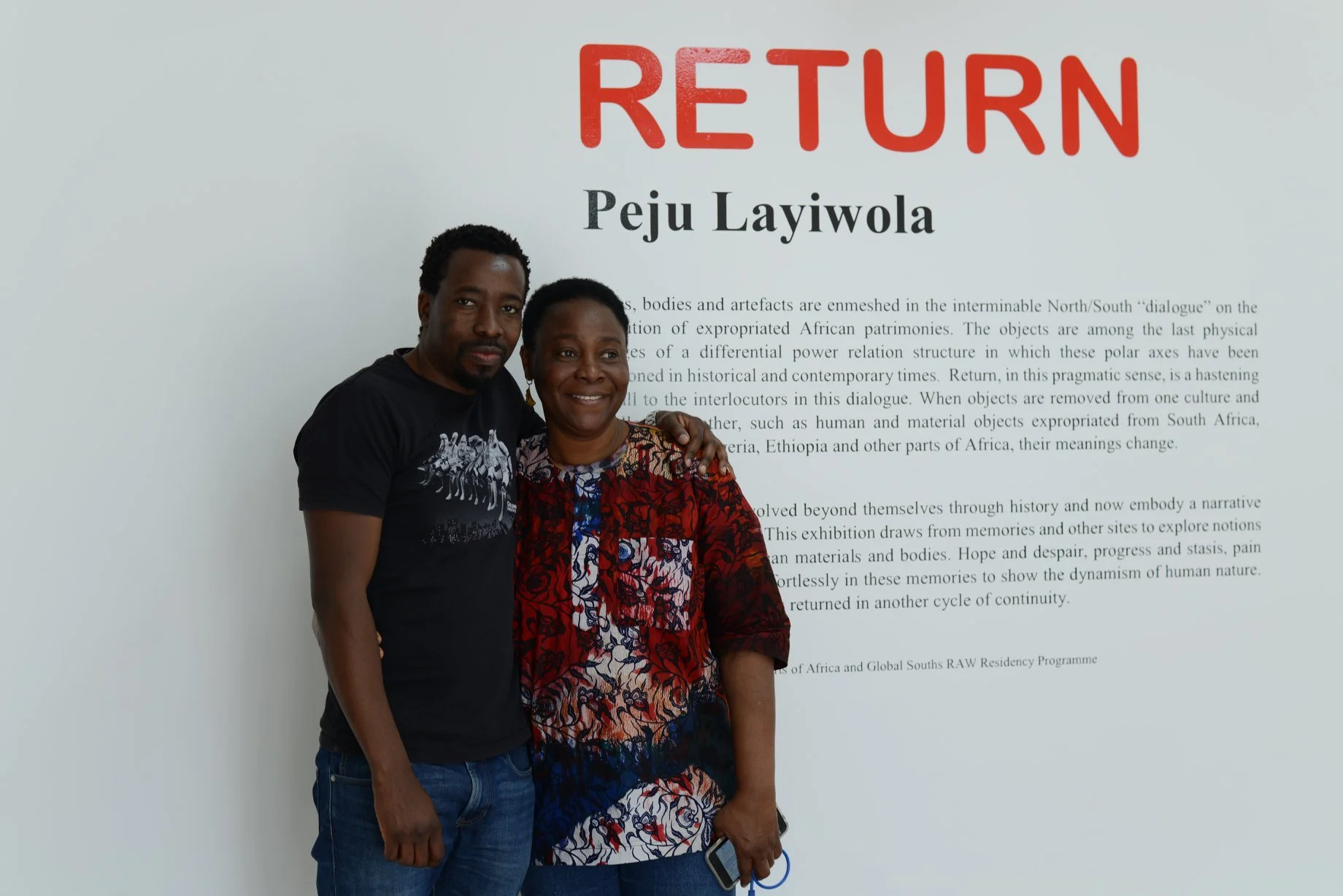






We hosted Harare-based artist, Moffat Takadiwa as an artist in residence in 2018, and he created the exhibition, framed in colonial lenses at the RAW Spot Gallery. The exhibition developed Takadiwa’s previous work inspired by recent youth movements in Africa, particularly the Rhodes Must Fall protest movement in South Africa. His experience of coming to Rhodes University from his own country, Zimbabwe (formerly known as Rhodesia), heightened his awareness of the name “Rhodes” and the shadows of colonial lenses that persistently frame the histories and cultures of Africans. His sculptural works were made predominantly from black keys from dismantled computer keyboards that were sourced from Johannesburg. The fragments of keyboards question the role of language in the perpetuation of cultural imperialism. Photographs by Ruth Simbao. Please don’t use without written permission.

























Kresiah Mukwazhi participated in the Residencies for Artists and Writers (RAW) programme from June to August 2019. She created the open studio exhibition, Although I am young I am the mother of this house at the RAW Spot Gallery, which explores ideas of safety, freedom and resistance, particularly for women. This body of work draws from the artist’s research on sex workers at Hopely Farm, one of the poorest suburbs in Zimbabwe. She creates wall textiles with embroidered text, commenting on the loose-tongued language of these women, which pushes back at the vulgar language often used against them by the public. Images by Ruth Simbao and Lifang Zhang. Please do not use without written permission.
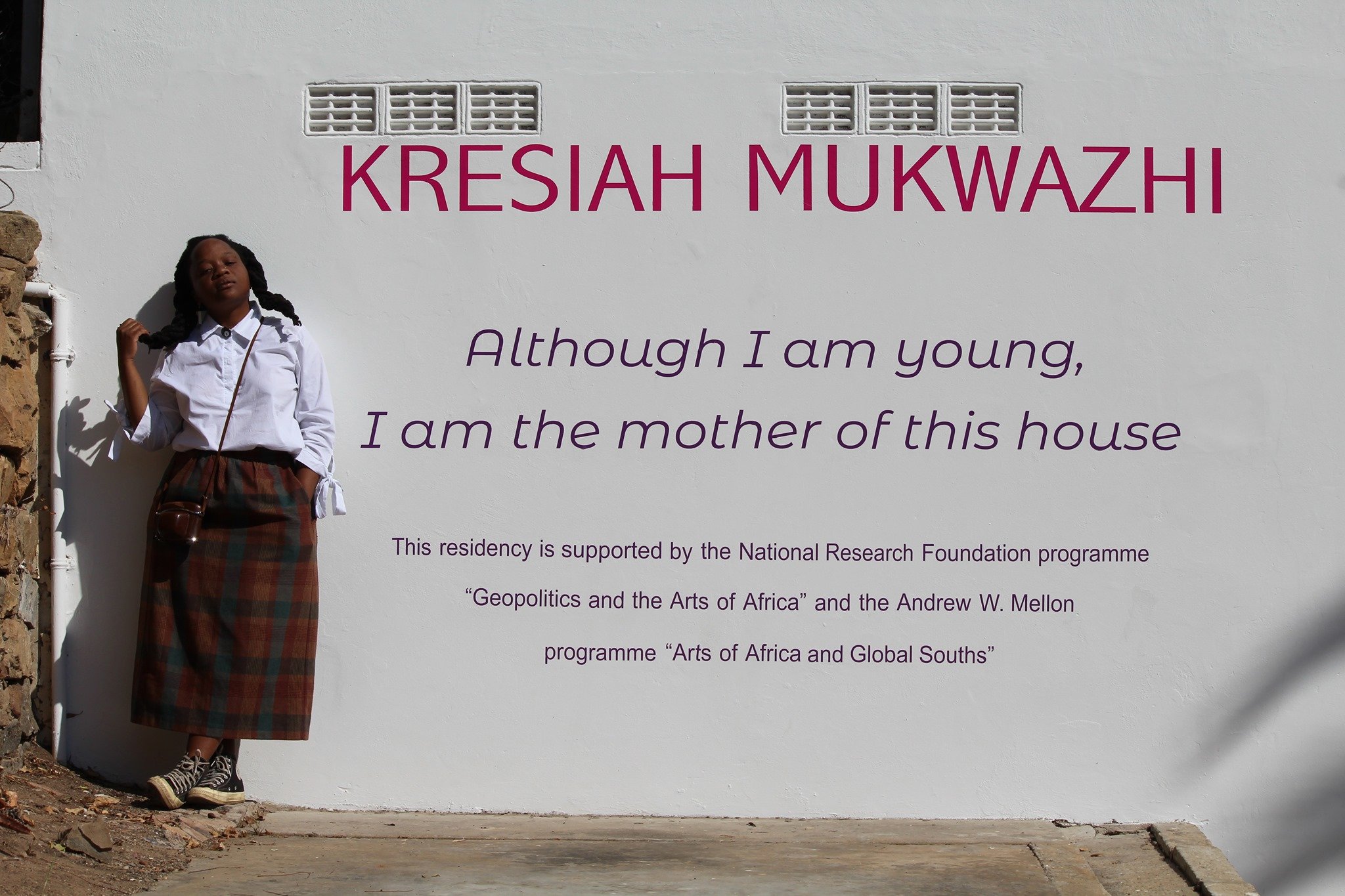




















Senzo Shabangu was a RAW artist in residence in 2021 and created the solo exhibition, Their Humble Abode at the RAW Spot Gallery during the National Arts Festival. This new body of work narrated the story of African children as they migrate from different places in search for better education. The work engages with students’ faith, morals and mother tongues, and the image of the ark symbolises how students walk together to the imaginary promised land. This exhibition in Makhanda extended Shabangu’s previous work on the cityscape and Johannesburg Towers, which honoured all African children who migrated from different parts of the continent.






















Usen Obot was a fellow of the Residencies for Artists and Writers (RAW) programme in 2021, and he created the new body of work, Mkpese: Then, Now and Future Histories. This exhibition at the RAW Spot Gallery drew from the works of the ancient cultural practices of the Ekpo society in Ibibio culture. After its showing at Rhodes University, the exhibition travelled to the Nelson Mandela Metropolitan University art gallery in Gqeberha. Photographs by Ruth Simbao. Please do not use without written permission.























Quadri Oluwasegun produced the exhibition, Sùnnùkùn, when he was a Postdoctoral Fellow with my NRF research programme, Geopolitics and the Arts of Africa. The artist draws from the history of pottery to create contemporary artworks that combine acrylic paint with clay. The exhibition provokes memories that distinguish the practices and values of Yoruba culture of South-West Nigeria, and opens up a metaphoric and at times playful platform to learn about Yoruba communal values, ethics and customs in a diasporic space. Photographs by Ruth Simbao, Barnabas Muvhuti and Lifang Zhang. Please do not use images without written permission.





























In 2023, the Makhanda-based artist Nompumelelo Edith Bukani was a RAW artist in residence with the Geopolitics and the Arts of Africa programme. Two students, Binjun Hu (then a PhD candidate) and Viwe Madinda (then a MA candidate) were invited to curated an exhibition of Bukani’s new work created for the residency. The artist’s first solo exhibition, My Name Will Be Mine One Day, was launched in June 2023, and showed during the National Arts Festival. Photographs by Ruth Simbao. Please do not use without written permission. Please note that Bukani’s prints are for sale.
















Fine Art student, Brünn Kramer, held his solo MFA exhibition, TRONKVOËL, at the RAW Spot Gallery in March 2021. (I co-supervised this MFA with Dominic Thorburn). TRONKVOËL (an Afrikaans word for ‘jailbird’) utilises the visual language of South African prison culture as a metaphor for experiences of depression. The artist uses deeply personal drawings created, in part, with soot, as well as sculptural objects that juxtapose childhood toys and makeshift weapons, to grapple with the way the community he grew up in misunderstood mental illness. See forthcoming book chapter, “Carceral Visuality as a Metaphor for Depression: Brünn Kramer’s Tronkvoél” by Rory Thomas and Brünn Kramer in Audacious Art Histories.



































